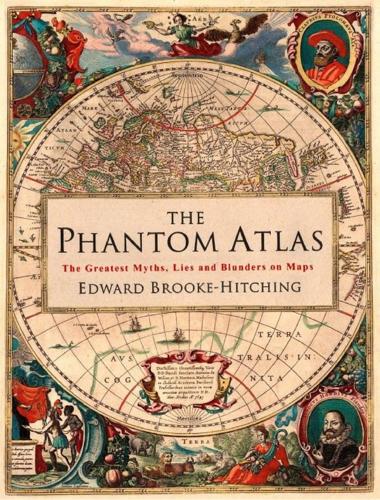
The Phantom Atlas: The Greatest Myths, Lies and Blunders on Maps
by
Edward Brooke-Hitching
Published 3 Nov 2016
The fall-out from this simple stroke of editorial air-brushing was considerable. Pepys Island can be found on at least 111 maps produced between 1699 and 1831 (seven of which have it drawn but not named). The mysterious land is one of the more widely believed phantoms, and was hunted by a veritable ‘Who’s Who’ of exploration. This included Dr Edmond Halley in 1698 (who would, later, sceptically interrogate George Psalmanazar over his claims to Formosan origins – see Formosa of George Psalmanazar entry here). Then, in the eighteenth century, it was the object of searches by George Anson in 1740–4, John Byron in 1764, by Captain Cook during two of his famous voyages, by Louis Antoine de Bougainville and also by Jean-François de Galaup, Comte de La Pérouse, among others.
…
As he toured with his Formosan lectures, delighting dinner guests by devouring his meat raw and bloody in Formosan custom, Psalmanazar regularly encountered sceptics, yet survived thanks to ignorance of Formosan customs and his impressive ability to explain away even the most ludicrous of claims. His pale skin? Why, that was because Formosans lived underground. Does the sun shine directly down the chimneys of his country, asked Edmund Halley during a grilling at the Royal Society. No, it does not, replied Psalmanazar. It must do! cried Halley triumphantly, for it lies in the Tropics! An excellent point, agreed the Formosan, were it not for the fact that Formosan chimneys are corkscrew-shaped – the sunlight never makes it to the bottom.
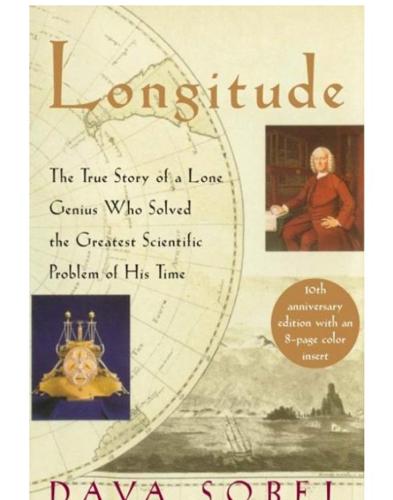
Longitude
by
Dava Sobel
Published 1 Jan 1995
Seafaring men such as Captain William Bligh of the Bounty and the great circumnavigator Captain James Cook, who made three long voyages of exploration and experimentation before his violent death in Hawaii, took the more promising methods to sea to test their accuracy and practicability. Renowned astronomers approached the longitude challenge by appealing to the clockwork universe: Galileo Galilei, Jean Dominique Cassini, Christiaan Huygens, Sir Isaac Newton, and Edmond Halley, of comet fame, all entreated the moon and stars for help. Palatial observatories were founded at Paris, London, and Berlin for the express purpose of determining longitude by the heavens. Meanwhile, lesser minds devised schemes that depended on the yelps of wounded dogs, or the cannon blasts of signal ships strategically anchored—somehow—on the open ocean.
…
Rare was the compass needle that pointed precisely north at all times; most displayed some degree of variation, and even the variation varied from one voyage to the next, making it tough to get precise measurements. What’s more, the results were further contaminated by the vagaries of terrestrial magnetism, the strength of which waxed or waned with time in different regions of the seas, as Edmond Halley found during a two-year voyage of observation. In 1699, Samuel Fyler, the seventy-year-old rector of Stockton, in Wiltshire, England, came up with a way to draw longitude meridians on the night sky. He figured that he—or someone else more versed in astronomy—could identify discrete rows of stars, rising from the horizon to the apex of the heavens.
…
—ROBERT BURNS, “Tam o’ Shanter” The merchants’ and seamen’s petition pressing for action on the matter of longitude arrived at Westminster Palace in May of 1714. In June, a Parliamentary committee assembled to respond to its challenge. Under orders to act quickly, the committee members sought expert advice from Sir Isaac Newton, by then a grand old man of seventy-two, and his friend Edmond Halley. Halley had gone to the island of St. Helena some years earlier to map the stars of the southern hemisphere—virtually virgin territory on the landscape of the night. Halley’s published catalog of more than three hundred southern stars had won him election to the Royal Society. He had also traveled far and wide to measure magnetic variation, so he was well versed in longitude lore—and personally immersed in the quest.
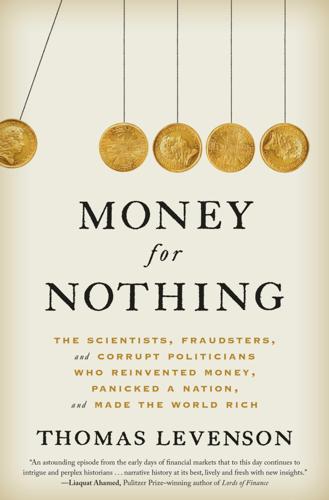
Money for Nothing
by
Thomas Levenson
Published 18 Aug 2020
CHAPTER 3 HE WAS AN INVENTOR Alan Cook, Edmond Halley: Charting the Heavens and the Seas (Oxford: Clarendon Press, 1998), p. 239. HE WAS A COURAGEOUS EXPLORER Cook, Edmond Halley, p. 256. HE MASTERED ARABIC G. A. Russell, The “Araibick” Interest of the Natural Philosophers in Seventeenth-Century England (Leiden, Netherlands: E. J. Brill, 1994), p. 154. See the Arabic manuscript of Apollonius’s Conics, with Halley’s marginal notes in Latin: https://wayback.archive-it.org/all/20190828095830/https://genius.bodleian.ox.ac.uk/exhibits/browse/conics/. HE GENERATED A “SOLUTION OF A PROBLEM” Edmond Halley, “A Discourse Concerning Gravity […] Together with the Solution of a Problem of Great Use in Gunnery,” Philosophical Transactions 16 (January 1687): 3–21, https://royalsocietypublishing.org/doi/10.1098/rstl.1686.0002.
…
Lower, to be made by him, for the Improvement of Transfusing blood out of one live Animal into another,” Philosophical Transactions 1, no. 22 (May 30, 1667) 385; Jean baptiste de la Quintinie, “Extract of a letter of M. dela Quintinie, giving some further directions and observations about Melons,” Philosophical Transactions 4, no. 46 (January 1, 1669): 923–24. (Note: The dates refer to time of publication, not the date of the Royal Society meeting at which the papers were read.) EDMOND HALLEY HAD A RUMMAGE THROUGH HIS PAPERS Edmond Halley, “An Estimate of the Degrees of the Mortality of Mankind […],” Philosophical Transactions 17, no. 196 (December 3, 1693): 597. Some accounts suggest that Halley found Neumann’s papers after Justel’s death in 1693. A problem with that account is that Justel’s death is listed as occurring in September (though there is some uncertainty about that date, and Robert Hooke noted in his diary that Halley spoke to the Society on Neumann’s data the previous March).
…
But what distinguishes the Down Survey is its focus on reducing Ireland’s contents to a clear, abstract, quantitative account, one that would allow the direct comparison of the value of one grant or award with another. The Domesday records may have aspired to precision but didn’t come close to achieving it. CHAPTER THREE “Very probable Conjectures” In 1693, Edmond Halley, age thirty-seven, was, for all his relative youth, recognized as one of the Royal Society’s most formidable talents. Like many of his contemporaries, Halley didn’t confine himself to a single discipline. He was an astronomer, of course, among the best observers in Europe and the author of that great triumph of theory, the prediction that the comet of 1682 would return in seventy-six years.
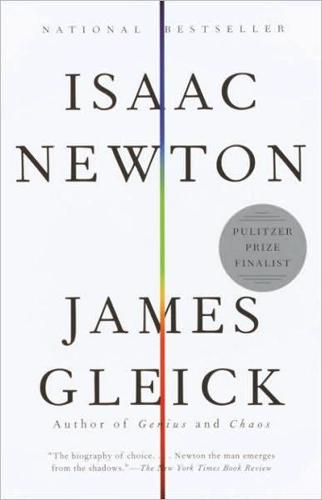
Isaac Newton
by
James Gleick
Published 1 Jan 2003
A more dramatic spectacle appeared in the nights of December. Newton saw it with naked eye on December 12: a comet whose great tail, broader than the moon, stretched over the full length of King’s College Chapel. He tracked it almost nightly through the first months of 1681.1 A young astronomer traveling to France, Edmond Halley, a new Fellow of the Royal Society, was amazed at its brilliance.2 Robert Hooke observed it several times in London. Across the Atlantic Ocean, where a handful of colonists were struggling to survive on a newfound continent, Increase Mather delivered a sermon, “Heaven’s Alarm to the World,” to warn Puritans of God’s displeasure.3 Halley served as a sometime assistant to a new officeholder, the Astronomer Royal.
…
I doubt not but that by your excellent method you will easily find out what that Curve must be, and its proprietys, and suggest a physicall Reason of this proportion.21 Hooke had finally formulated the problem exactly. He acknowledged Newton’s superior powers. He set forth a procedure: find the mathematical curve, suggest a physical reason. But he never received a reply. Four years later Edmond Halley made a pilgrimage to Cambridge. Halley had been discussing planetary motion in coffee-houses with Hooke and the architect Christopher Wren. Some boasting ensued. Halley himself had worked out (as Newton had in 1666) a connection between an inverse-square law and Kepler’s rule of periods—that the cube of a planet’s distance from the sun varies as the square of its orbital year.
…
He studied the map of Batsha Harbor, with multiple inlets and open channels, reaching the China Sea and the Indian Ocean, and worked out a theory of wave interference that could account for the data. I. Bernard Cohen, “Prop. 24: Theory of the Tides; The First Enunciation of the Principle of Interference,” in Principia 240; Ronan, Edmond Halley, pp. 69f. 29. Galileo, Dialogue, pp. 445 and 462. 30. These explicitly became rules in the second edition; in the first, they were called “hypotheses.” Principia 794–96. There were four rules in all; the others were: Those qualities of bodies that cannot be increased or diminished and that belong to all bodies on which experiments can be made should be taken as qualities of all bodies universally.
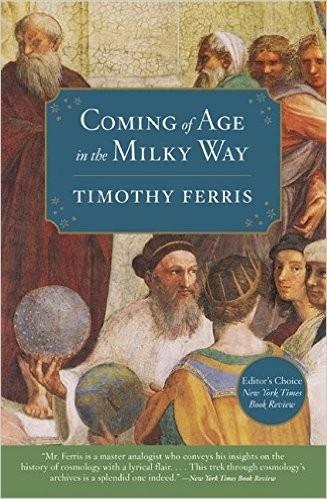
Coming of Age in the Milky Way
by
Timothy Ferris
Published 30 Jun 1988
Speaking at a ceremony honoring the centenary of Einstein’s birth, the Pope declared that Galileo had “suffered at the hands of men and institutions of the Church,” adding that “research performed in a truly scientific manner can never be in contrast with faith because both profane and religious realities have their origin in the same God.”32 6 NEWTON’S REACH Watch the stars, and from them learn. To the Master’s honor all must turn, each in its track, without a sound, forever tracing Newton’s ground.* —Einstein Nearer the gods no mortal may approach. —Edmond Halley, on Newton’s Principia Newton created a mathematically quantified account of gravitation that embraced terrestrial and celestial phenomena alike. In doing so he demolished the Aristotelian bifurcation of the universe into two realms, one above and one below the moon, and established a physical basis for the Copernican universe.
…
We feel certain that the forms and qualities of things can best be explained by the principles of mechanics, and that all effects of Nature are produced by motion, figure, texture, and the varying combinations of these and that there is no need to have recourse to inexplicable forms and occult qualities, as to a refuge from ignorance.10 This clear new cast of mind was personified by the three members of the Royal Society—Edmond Halley, Christopher Wren, and Robert Hooke—who lunched together in a London tavern one cold January afternoon in 1684. Wren, who had been president of the Royal Society, was an astronomer, geometer, and physicist, and the architect of St. Paul’s Cathedral—where his body is entombed, with an epitaph composed by his son inscribed on the cathedral wall that reads, IF YOU SEEK A MONUMENT, LOOK AROUND.
…
Venus comes closer to Earth than does Mars, and so should be still more accessible to triangulation, but when closest it is lost in the glare of the sun. Twice in a long while, however, in pairs of events separated by just over a century, Venus passes directly in front of the sun. During these transits, as they are called, the planet appears as a black circle silhouetted against the blazing solar disk. Edmond Halley, who had observed a transit of Mercury during his expedition to St. Helena, realized that the distance to Venus might be determined by timing, from widely separated stations, exactly when the planet appeared and disappeared from the face of the sun. The edge of the sun would serve as a clearly defined backdrop, the planet as a kind of surveyor’s stake out in space.
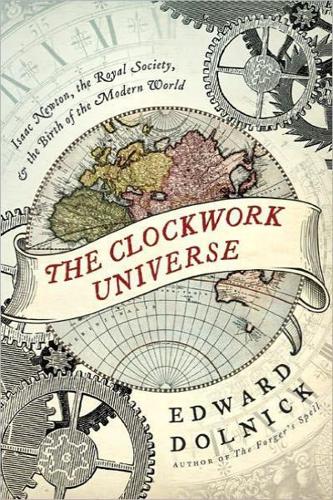
The Clockwork Universe: Saac Newto, Royal Society, and the Birth of the Modern WorldI
by
Edward Dolnick
Published 8 Feb 2011
Newton’s theory of gravity propelled him to instant fame. He liked to tell the story, depicted in this Japanese print, that the crucial insight came from watching an apple fall. The story is quite likely a myth. Before anyone knew of his mathematical genius, Newton had dazzled the Royal Society with this compact yet powerful telescope. Edmond Halley (known today for Halley’s Comet) was a brilliant astronomer and, just as surprisingly, a man so congenial that he could get along with Isaac Newton. Halley took on the task of coaxing the reluctant, secretive Newton into publishing his masterpiece, Principia Mathematica. The 500-page book, in Latin and dense with mathematics, might never have appeared without Halley’s labors.
…
Stymied by the difficulty of sorting out gravity, or perhaps tempted more by questions in other fields, Newton had put gravity aside after his miracle years. He had made his apple-and-moon calculation when he was in his twenties. For the next twenty years he gave most of his attention to optics, alchemy, and theology instead. Late on a January afternoon in 1684, Robert Hooke, Christopher Wren, and Edmond Halley left a meeting of the Royal Society and wandered into a coffeehouse to pick up a conversation they had been carrying on all day. Coffee had reached England only a generation before, but coffeehouses had spread everywhere.49 Hooke in particular seemed to thrive in the rowdy atmosphere. In crowded rooms thick with the hubbub of voices and the smells of coffee, chocolate, and tobacco, men sat for hours debating business, politics, and, lately, science.
…
Rather than carry a planet on its eternal rounds, any whirlpool would sooner or later be “swallowed up and lost.” In any case, no such picture could be made to fit with Kepler’s laws. Then came Book III, which was destined to make the Principia immortal. Chapter Forty-Eight Trouble with Mr. Hooke If not for the Principia’s unsung hero, Edmond Halley, the world might never have seen Book III. At the time he was working to coax the Principia from Newton, Halley had no official standing to speak of. He was a minor official at the Royal Society—albeit a brilliant scientist—who had taken on the task of dealing with Newton because nobody else seemed to be paying attention.
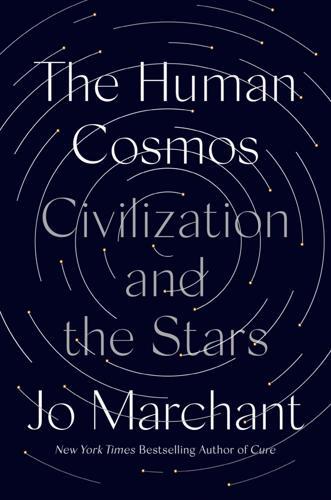
The Human Cosmos: A Secret History of the Stars
by
Jo Marchant
Published 15 Jan 2020
But Kepler had shown that there is a simple mathematical relationship between the size of a planet’s orbit and the time it takes to complete one revolution. This enabled astronomers to work out from the periods how all the distances in the solar system are related: find just one and they would know them all. In 1716, England’s second Astronomer Royal, Edmond Halley, suggested how to measure a planet’s parallax more accurately than ever before, by watching Venus as it passed in front of the Sun—an event known as a transit. Observers in far-flung places would see Venus sweep across the Sun’s disk along two different chords, so they could calculate the planet’s parallax by timing exactly how long it took for the transit to occur in each place.* It was an ambitious plan, requiring observers all over the globe, each of whom would need to time the hours-long transit to the nearest second.
…
David Woodward and Malcolm Lewis (Chicago: University of Chicago Press, 1998), 443–92. device he called H4: David Landes, Revolution in Time, 145–57. popularized in Dava Sobel’s: Dava Sobel, Longitude: The True Story of a Lone Genius Who Solved the Greatest Scientific Problem of His Time (New York: Walker & Co., 1995). measure a planet’s parallax: Edmund Halley, “A New Method of Determining the Parallax of the Sun,” Philosophical Transactions 29 (1716): 454; Michael Chauvin, “Astronomy in the Sandwich Islands: The 1874 Transit of Venus,” The Hawaiian Journal of History 27 (1993): 185–225. History of attempts to measure solar system size from Venus transits: Donald Teets, “Transits of Venus and the Astronomical Unit,” Mathematics Magazine 76 (2003): 335–48.
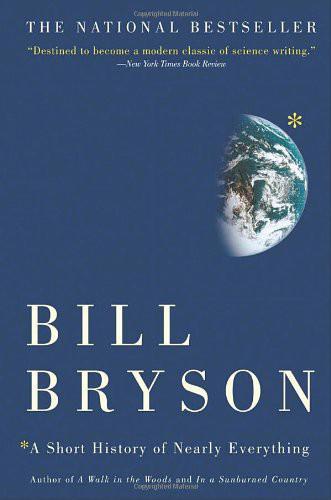
A Short History of Nearly Everything
by
Bill Bryson
Published 5 May 2003
Why didn't the French make their measurements in France and save themselves all the bother and discomfort of their Andean adventure? The answer lies partly with the fact that eighteenth-century scientists, the French in particular, seldom did things simply if an absurdly demanding alternative was available, and partly with a practical problem that had first arisen with the English astronomer Edmond Halley many years before—long before Bouguer and La Condamine dreamed of going to South America, much less had a reason for doing so. Halley was an exceptional figure. In the course of a long and productive career, he was a sea captain, a cartographer, a professor of geometry at the University of Oxford, deputy controller of the Royal Mint, astronomer royal, and inventor of the deep-sea diving bell.
…
At his urging, the Royal Society agreed to engage a reliable figure to tour the British Isles to see if such a mountain could be found. Maskelyne knew just such a person—the astronomer and surveyor Charles Mason. Maskelyne and Mason had become friends eleven years earlier while engaged in a project to measure an astronomical event of great importance: the passage of the planet Venus across the face of the Sun. The tireless Edmond Halley had suggested years before that if you measured one of these passages from selected points on the Earth, you could use the principles of triangulation to work out the distance to the Sun, and from that calibrate the distances to all the other bodies in the solar system. Unfortunately, transits of Venus, as they are known, are an irregular occurrence.
…
Even the Reverend Buckland, as pious a soul as the nineteenth century produced, noted that nowhere did the Bible suggest that God made Heaven and Earth on the first day, but merely “in the beginning.” That beginning, he reasoned, may have lasted “millions upon millions of years.” Everyone agreed that the Earth was ancient. The question was simply how ancient. One of the better early attempts at dating the planet came from the ever-reliable Edmond Halley, who in 1715 suggested that if you divided the total amount of salt in the world's seas by the amount added each year, you would get the number of years that the oceans had been in existence, which would give you a rough idea of Earth's age. The logic was appealing, but unfortunately no one knew how much salt was in the sea or by how much it increased each year, which rendered the experiment impracticable.
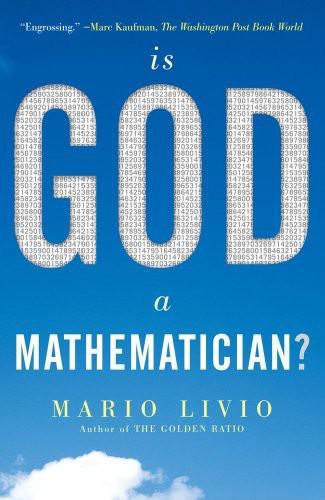
Is God a Mathematician?
by
Mario Livio
Published 6 Jan 2009
The feud between the two scientists reached an even higher peak when it came to the theory of gravity. When Newton heard that Hooke had claimed to be the originator of the law of gravity, he meticulously and vindictively erased every single reference to Hooke’s name from the last part of his book on the subject. To his friend the astronomer Edmond Halley (1656–1742), Newton wrote on June 20, 1686: Figure 27 He [Hooke] should rather have excused himself by reason of his inability. For tis plain by his words he knew not how to go about it. Now is not this very fine? Mathematicians that find out, settle and do all the business must content themselves with being nothing but dry calculators and drudges and another that does nothing but pretend and grasp at all things must carry away all the invention as well of those that were to follow him as of those that went before.
…
His observation that the percentages of certain events previously considered purely a matter of chance or fate (such as deaths caused by various diseases) in fact showed an extremely robust regularity, introduced scientific, quantitative thinking into the social sciences. The researchers who followed Graunt adopted some aspects of his methodology, but also developed a better mathematical understanding of the use of statistics. Surprisingly perhaps, the person who made the most significant improvements to Graunt’s life table was the astronomer Edmond Halley—the same person who persuaded Newton to publish his Principia. Why was everybody so interested in life tables? Partly because this was, and still is, the basis for life insurance. Life insurance companies (and indeed gold diggers who marry for money!) are interested in such questions as: If a person lived to be sixty, what is the probability that he or she would also live to be eighty?
…
The first signs of a potential gap between the perception of Euclidean geometry as a collection of universal truths and other branches of mathematics were uncovered by the Irish philosopher George Berkeley, Bishop of Cloyne (1685–1753). In a pamphlet entitled The Analyst; Or a Discourse Addressed to An Infidel Mathematician (the latter presumed to be Edmond Halley), Berkeley criticized the very foundations of the fields of calculus and analysis, as introduced by Newton (in Principia) and Leibniz. In particular, Berkeley demonstrated that Newton’s concept of “fluxions,” or instantaneous rates of change, was far from being rigorously defined, which in Berkeley’s mind was sufficient to cast doubt on the entire discipline: The method of fluxions is the general key, by help whereof the modern Mathematicians unlock the secrets of Geometry, and consequently of Nature…But whether this Method be clear or obscure, consistent or repugnant, demonstrative or precarious, as I shall inquire with the utmost impartiality, so I submit my inquiry to your own Judgement, and that of every candid Reader.
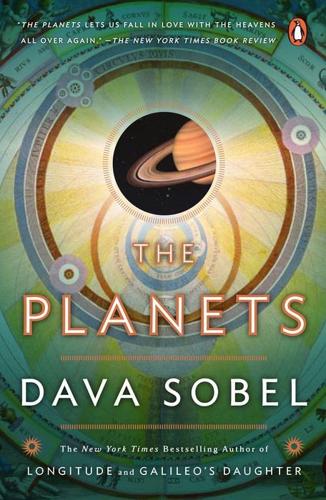
The Planets
by
Dava Sobel
Published 1 Jan 2005
Perhaps the degree of “variation” of the compass can be measured from place to place, and the featureless oceans resolved into magnetic zones to help sailors establish their whereabouts during weeks or months at sea. This possibility launches the first purely scientific voyage, under the command of Edmond Halley, the only Astronomer Royal ever to win a commission as captain in the Royal Navy. Between 1698 and 1700, Halley leads two expeditions across the Atlantic Ocean, and also to the Atlantic’s northern and southern limits until stopped by icebergs in fog. Off the coast of Africa and again near Newfoundland, Halley’s specially designed flat-bottomed vessel, the Paramore, draws friendly fire from English merchantmen and colonial fishermen who mistake her for a pirate ship.
…
New York: John Wiley & Sons, 1999. Strauss, David. Percival Lowell: The Culture and Science of a Boston Brahmin. Cambridge, Mass.: Harvard University Press, 2001. Strom, Robert G. Mercury: The Elusive Planet. Washington and London: Smithsonian Institution, 1987. Thrower, Norman J. W., ed. The Three Voyages of Edmond Halley in the Paramore 1698–1701. London: Hakluyt Society, 1981. Tombaugh, Clyde W., and Patrick Moore. Out of the Darkness: The Planet Pluto. Harrisburg, Pa.: Stackpole, 1980. Tyson, Neil de Grasse, with Charles Liu and Robert Irion, eds. One Universe. Washington, D.C.: Joseph Henry Press, 2000. Van Helden, Albert.
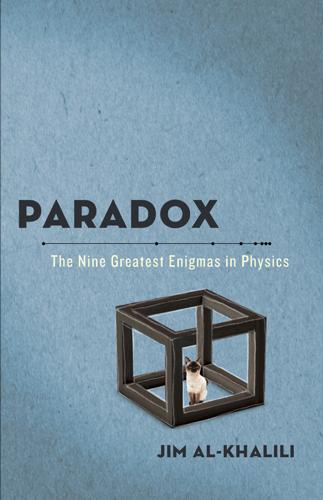
Paradox: The Nine Greatest Enigmas in Physics
by
Jim Al-Khalili
Published 22 Oct 2012
In 1952 the great Anglo-Austrian cosmologist Hermann Bondi published an influential textbook in which the term “Olbers’ Paradox” was coined for the first time. But as we shall see, the attribution was misplaced, for Olbers was not the first to pose the problem, nor was his contribution to its resolution particularly original or enlightening. A century before him Edmond Halley had already stated it, and a century before him Johannes Kepler had posed it in 1610. And even he wasn’t the first to record it: for that, we have to go back to 1576 and the very first English translation of De revolutionibus, the great work of Copernicus, written a few decades earlier. Any account of the history of astronomy begins with the same few key individuals in the leading roles.
…
But that was to come later. In 1610 Johannes Kepler revisited the problem, arguing the reason it was dark at night was simply because the Universe was finite in extent: the darkness between the stars was the dark outer wall enclosing the Universe. Over a century after Kepler, another astronomer, the Englishman Edmond Halley, looked at the problem again and came out in support of Digges’ original solution: that the Universe is infinite, but that the distant stars are too faint to be seen. Figure 3.1 Three models of the Universe It was a Swiss astronomer by the name of Jean-Philippe de Chéseaux who showed, a few years later, that this does not help resolve the problem.
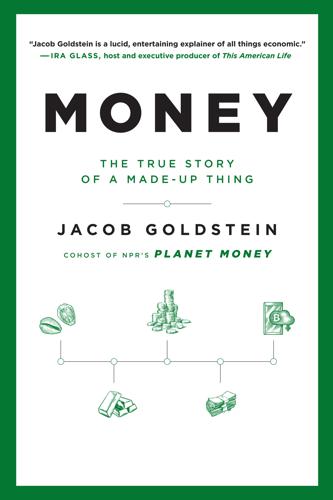
Money: The True Story of a Made-Up Thing
by
Jacob Goldstein
Published 14 Aug 2020
They were playing dice, but they didn’t know the odds. In England at the time, an annuity was the same price no matter the age of the person who bought it. So everybody started buying annuities for their teenage kids, who were likely to live a long time and make a huge profit. Good for the kids, bad for England. The British mathematician Edmond Halley knew of the work of Pascal and Fermat and figured the math for annuities should be solvable. By the time he was thirty-three years old, Halley had already traveled halfway around the world to map the stars, and helped his pal Isaac Newton publish The Principia, the book that laid out the theory of gravity.
…
Halley’s paper was called “An Estimate of the Degrees of the Mortality of Mankind; drawn from curious Tables of the Births and Funerals at the City of Breslaw; with an Attempt to ascertain the Price of Annuities upon Lives.” It was published in the Philosophical Transactions of the Royal Society. James Ciecka’s “Edmond Halley’s Life Table and Its Uses,” published in the Journal of Legal Economics, was a useful guide. The figures from Wallace and Webster’s life insurance fund are from “Early Actuarial Work in Eighteenth-Century Scotland,” by J. B. Dow, published in the Transactions of the Faculty of Actuaries. The Wallace and Webster story is well told by Ferguson.
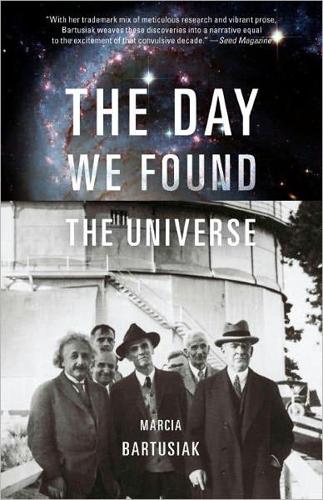
Day We Found the Universe
by
Marcia Bartusiak
Published 6 Apr 2009
The most famous is in the northern constellation Andromeda, the mythical princess situated in the sky near her parents, Cassiopeia and Cepheus, and her husband, Perseus. At her waist is an oval patch of light, best seen on the darkest of nights. As early as the tenth century, astronomer Al-Sufi of Persia noted it as a “little cloud” in his catalog of the heavens. With the invention of the telescope more nebulae were sighted, and by the early 1700s Edmond Halley (of comet fame) counted six in all. To some observers, these pale entities were breaks in the celestial sphere, through which the light of the Empyrean—the highest heaven—came shining down. Others suggested that they were the hazy atmospheres surrounding distant stars. Halley, however, thought of them as unique celestial objects, unlike anything else in the heavens.
…
I have seldom known a man who seemed to be better qualified to meet the conditions imposed by the founder of the Rhodes scholarship than is Mr. Hubble.” Hubble arrived at Oxford in October 1910, living for the next three years on an annual stipend of fifteen hundred dollars. There he walked the very halls where Edmond Halley once strode and joined a cozy club of privileged young men from England's wealthiest families, who were training for select positions in the military, banking, industry, government, and diplomatic services. With continued pressure from both his father and grandfather, Hubble dutifully studied the law and completed the jurisprudence coursework in two years instead of the usual three.
…
Hardy (1883), p. 38. 38 “no other than a certain Effect”: Wright (1750), p. 48. 40 “I don't mean to affirm”: Ibid., p. 62. 40 “too remote for even our telescopes to reach”: Ibid., p. 84. 40 “there may be innumerable other spheres”: Swedenborg (1845), pp. 271–72. 40 what they thought he meant: See Hoskin (1970). 40 “just universes and, so to speak, Milky Ways”: Kant (1900), p. 63. 41 Kant's manuscript was destroyed: Hetherington (1990b), p. 15. 41 “I easily persuaded myself”: Kant (1900), p. 33. 41 “island universes”: The phrase was never used by Kant. Humboldt first applied the term to describe Kant's theory in his book Kosmos, published in 1845. He wrote it in his native language as Weltinsel, “world island,” which was later transformed into the more familiar expression. 41 Edmond Halley (of comet fame) counted six in all: Not all of the objects on Halley's list were true nebulae. The six are: (1) the Orion nebula, (2) the Andromeda nebula (now galaxy), (3) the globular cluster M22 in Sagittarius, (4) the globular cluster Omega Centauri, (5) the open star cluster M11 in Scutum, and (6) the globular cluster M13 in Hercules.

I Never Knew That About London
by
Christopher Winn
Published 3 Oct 2007
St Paul’s scholars still on occasion wear silver fish in their buttonholes. Among those who attended St Paul’s before it moved to Hammersmith at the end of the 19th century, and then to Barnes, were John Milton, Samuel Pepys, Judge Jeffreys, John Churchill, 1st Duke of Marlborough and the astronomer Edmond Halley. In 1606 Guy Fawkes and some of his co-conspirators were hung, drawn and quartered in the churchyard for plotting to blow up James I and Parliament. St Paul’s churchyard was also a great market-place for booksellers and publishers, many of whom had shops or stalls in Paternoster Row, along the north side.
…
Royal Observatory Zero Hour OVERLOOKING GREENWICH FROM the summit of the park, with one of the great views of London, is the ROYAL OBSERVATORY, THE FIRST OBSERVATORY IN ENGLAND. It was designed by Sir Christopher Wren and built in 1675. The first Astronomer Royal, appointed by Charles II, was JOHN FLAMSTEED. He was succeeded in 1720 by EDMOND HALLEY, who charted the course of his famous comet here but died before seeing his calculations proved correct. In 1833 a time ball, THE FIRST VISUAL TIME SIGNAL IN THE WORLD, was placed on top of the observatory, and ever since that day the time ball has been raised at 12.55 and dropped precisely at 13.00, so that ships on the river can set their clocks accurately.
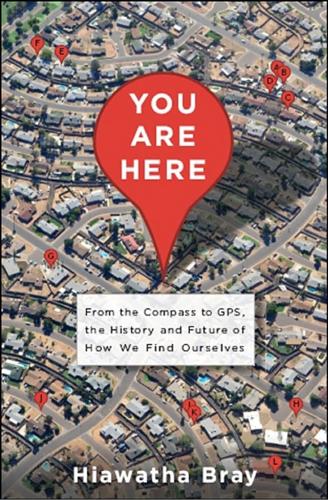
You Are Here: From the Compass to GPS, the History and Future of How We Find Ourselves
by
Hiawatha Bray
Published 31 Mar 2014
Still, it might be possible to record these variations at many points on land and sea and thus create a magnetic chart of longitude. In 1698 Queen Mary II of England bankrolled the effort to create such a chart. The royal treasury financed the construction of a small vessel and chose eminent mathematician and astronomer Edmond Halley to lead the expedition. Over two years and two voyages, Halley and his team carefully collected magnetic data over a vast area of the Atlantic Ocean, from 52 degrees north of the equator to 52 degrees south. The result was the first magnetic declination chart. Halley’s chart, and many that have been created since, is a superb resource for navigators, enabling them to correct their compass readings.
…
To make a thematic map, you must start with a reasonably accurate geographic map. Then you overlay this map with “georeferenced” data, which are facts about some aspect of the world that are associated with a specific place. For instance, knowing which way the wind will blow is vital data for those who rely on sailing ships to get around. The renowned astronomer Edmond Halley collected thousands of wind measurements taken at various places on the world’s oceans and transcribed the data onto a map. The result was the first map of global wind patterns, a valuable aid to navigators published by Halley in 1686. In the seventeenth century European scholars understood the value of collecting and cataloging data on every imaginable subject.

Money Changes Everything: How Finance Made Civilization Possible
by
William N. Goetzmann
Published 11 Apr 2016
To solve the problem, De Witt basically estimated survival probabilities according to age and then proposed an age-dependent pricing scale. It was a coarse simplification, but a significant step toward a solution. A more precise answer to the annuity valuation problem would actually emerge from something quite strange: games and play. 15 THE DISCOVERY OF CHANCE Edmond Halley’s graphic representation of the mortality probabilities for a tontine with three claimants. The annuity contract was one of Europe’s greatest contributions to humanity. By purchasing an annuity on a single life, or an annuity on a group of lives, citizens could shift the risk of longevity or untimely death from the family to the state.
…
These records provided copious details about the births and deaths in the Silesian port city from 1687 to 1691—enough information to reliably estimate the life expectancy for various age groups. Instead of sharing this data with Bernoulli, Leibnitz forwarded it to the Royal Academy in London, where it piqued the interest of the astronomer, Edmund Halley. Halley used the Breslaw data to construct mortality tables, that is, frequencies of death by age group. He published his findings in 1693 in the Transactions of the Royal Academy.5 Perhaps most importantly, Halley used statistical analysis to show that the government was selling their life annuities way too cheaply.
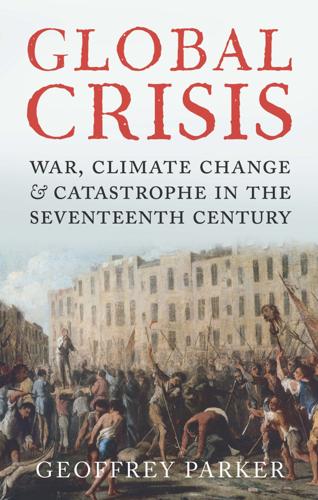
Global Crisis: War, Climate Change and Catastrophe in the Seventeenth Century
by
Geoffrey Parker
Published 29 Apr 2013
Hevelius's ‘disks’ reveal that sunspots were already rare: he seldom saw more than one or two groups at a time. Third, the aurora borealis (the ‘northern lights’ caused when highly charged electrons from the magnetosphere interact with elements in the earth's atmosphere) became so rare that when the astronomer Edmond Halley saw an aurora in 1716 he wrote a learned paper describing the phenomenon – because it was the first he had seen in almost fifty years of observation.37 Finally, neither Halley nor other astronomers between the 1640s and the 1700s mentioned the brilliant corona nowadays visible during a total solar eclipse: instead they reported only a pale ring of dull light, reddish and narrow, around the moon.
…
Everyone, they found, was ‘well acquainted with writings of all the learned and ingenious men’ of Europe, whether dead (such as Bacon, Harvey, Galileo and Descartes) or alive (they named Robert Boyle, Thomas Hobbes and Robert Hooke).61 The ‘Republic of Letters’ also included practitioners who lived east of the Elbe and south of the Pyrenees. The Danzig brewer and astronomer Johannes Hevelius, who in 1647 published the lavishly illustrated Selenographia, the first lunar atlas (see Plate 1), had studied at Leiden and met scholars in England and France; became a Fellow of the Royal Society; and welcomed Edmond Halley and other prominent scientists to his impressive observatory in Danzig. In Spain, Miguel Marcelino Boix y Moliner asserted in a book entitled Hippocrates illuminated (1716) that ‘the foreign doctors and philosophers of the last century’ had only managed to ‘make great advances’ thanks to plagiarizing their Spanish precursors.
…
He predicted that ‘such a work would be of greater public utility than it might seem at first sight’, but (he continued with a sigh) ‘I have no hope that anyone will do it’ because ‘I think it is a skill beyond the reach of the human mind’. Isaac Newton took up this challenge in the 1680s, carefully copying into his notebooks the descriptions of comets that he found in Aristotle, medieval chronicles and more modern accounts, as well as the observations made by his contemporaries – not only Edmond Halley (who travelled to several European observatories to check their records) and John Flamsteed (the astronomer royal) but also the Jesuit Valentin Stansel from Brazil, the Harvard astronomer Thomas Brattle and his former schoolmate Arthur Storer, now a planter slave-owner in Calvert County, Maryland, who transmitted outstanding observations of the 1682 comet.
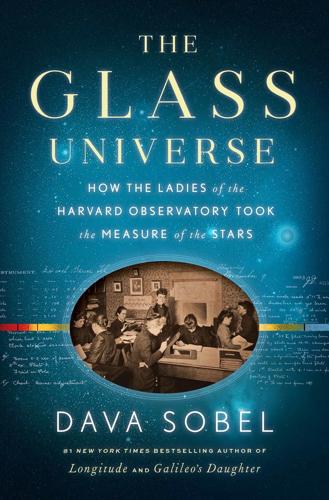
The Glass Universe: How the Ladies of the Harvard Observatory Took the Measure of the Stars
by
Dava Sobel
Published 6 Dec 2016
An opportunity to define the much desired Earth-Sun distance, or astronomical unit, arose late in the eighteenth century, on the occasion of the 1761 transit of Venus. Twice in about a hundred years, the orbits of Earth and Venus allow the sister planet to be seen crossing the face of the Sun over a period of several hours. English astronomer royal Edmond Halley foresaw the phenomenon’s potential for resolving the distance dilemma. He imagined observers venturing far to the north and south of the globe to watch the transit and record the exact times of its various stages. The wide geographical separation between the observing parties would cause each to see Venus transit the Sun at a slightly different solar latitude.
…
CHAPTER FIVE: Bailey’s Pictures from Peru Annie Jump Cannon was a lifelong diarist and prolific letter writer. Her diaries, scrapbooks, and other papers, including the libretti she collected for the many opera performances she attended, are held in the Harvard University Archives. Antonia Maury’s “Verses to the Vassar Dome,” written in 1896, were printed in Popular Astronomy in 1923. Edmond Halley summoned astronomers to observe the transit of Venus with his announcement, in Latin, of “A New Method of Determining the Parallax of the Sun,” published in Philosophical Transactions of the Royal Society in 1716. CHAPTER SIX: Mrs. Fleming’s Title The handwritten Journal of Williamina Paton Fleming, part of the Harvard “Chest of 1900,” is held in the University Archives and can be read online at http://pds.lib.harvard.edu/pds/view/3007384.

Empire of the Sum: The Rise and Reign of the Pocket Calculator
by
Keith Houston
Published 22 Aug 2023
Here, three seated abacists manipulate numbers dictated by two others.8 As with many significant events in history, however, the advent of the modern practice of human computation is tied to a portent from the heavens: the return, in 1758, of Halley’s Comet. In the seventeenth century, England’s Astronomer Royal, Edmond Halley, had tried and failed to factor in the gravitational forces of Jupiter and Saturn as he worked to predict when his eponymous comet would return.9 He figured that the comet must have an orbital period of between seventy-five and seventy-six years, but to be more precise than that was beyond him, thanks to a conundrum called the three-body problem.
…
Davis was instructed by Congress to use a meridian fixed at the U.S. Naval Observatory itself, sited on the banks of the Potomac River in emulation of its counterpart in Greenwich.19 With his dual meridians now decided and many thousands of calculations yet to be made, Davis chose to further imitate the Greenwich observatory. Since 1835, George Airy, one of Edmond Halley’s successors as Astronomer Royal, had been crunching astronomical data with the aid of a battalion of human computers. Airy’s computers, all of them male and some as young as fifteen, routinely worked twelve-hour days in the observatory’s octagonal office. A rule stated that any computer who reached the age of twenty-three would be summarily dismissed.20 Davis organized his computers with similar discipline but was less dogmatic in recruiting and retaining them.
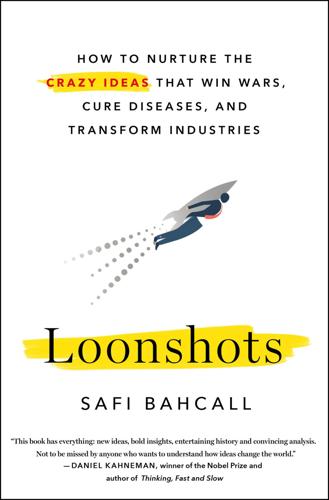
Loonshots: How to Nurture the Crazy Ideas That Win Wars, Cure Diseases, and Transform Industries
by
Safi Bahcall
Published 19 Mar 2019
“Producers of Computer Graphics for Hollywood Find New Opportunities in Science and Industry.” WSJ, Sep. 16, 1985. Nauenberg, Michael. “Robert Hooke’s Seminal Contribution to Orbital Dynamics.” Phys. Persp. 7 (2005): 4. Newsweek. “Mr. Chips: Steve Jobs Puts the ‘Wow’ Back in Computers.” Oct. 24, 1988. Newton, Isaac. Letter to Edmond Halley, June 20, 1686. Pitta, Julia. “The Steven Jobs Reality Distortion Field.” Forbes, Apr. 29, 1991, 137. Pollack, Andrew. “The Return of a Computer Star.” NY Times, Oct. 13, 1988. ________. “A Co-Founder of Next Is Quitting the Company.” NY Times, May 4, 1991. Price, David A. The Pixar Touch.
…
“yet is he very merry”: From An Account of the Plant call’d Bangue [Gange by the Moors], before the Royal Society, Dec. 18. 1689 (Hooke, 210): “It is a certain plant which grows very common in India … This Powder being chewed and swallowed, or washed down, by a small Cup of Water, doth, in a short Time, quite take away the Memory and Understanding; so that the Patient understands not, nor remembereth any Thing that he seeth, heareth, or doth, in that Extasie, but becomes, as it were, a mere Natural, being unable to speak a Word of Sense; yet is he very merry, and laughs, and sings, and speaks Words without any Coherence, not knowing what he saith or doth; yet is he not giddy, or drunk, but walks and dances, and sheweth many odd Tricks; after a little Time he falls asleep, and sleepeth very soundly and quietly; and when he wakes, he finds himself mightily refresh’d, and exceeding hungry.” or humanize deities: Edmond Halley wrote the foreword (opening inscription) to the Principia: O you who rejoice in feeding on the nectar of the gods in heaven Join me in singing the praises of NEWTON … No closer to the gods can any mortal rise. Voltaire wrote, “The catechism reveals God to children, but Newton has revealed him to the sages!”
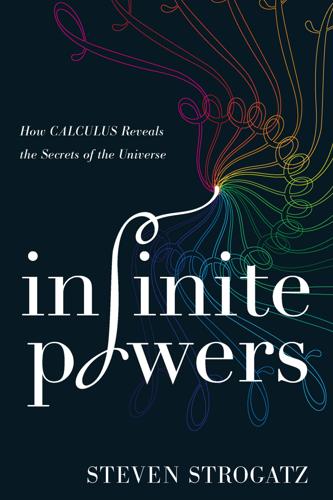
Infinite Powers: How Calculus Reveals the Secrets of the Universe
by
Steven Strogatz
Published 31 Mar 2019
In his magisterial three-volume masterpiece, Mathematical Principles of Natural Philosophy (often known as the Principia), Newton applied his theories to much more: the shape of the Earth, with its slightly bulging waistline caused by the centrifugal force of its spin; the rhythm of the tides; the eccentric orbits of comets; and the motion of the moon, a problem so difficult that Newton complained to his friend Edmond Halley that it had “made his head ache, and kept him awake so often, that he would think of it no more.” Today, when college students study physics, they are taught classical mechanics first—the mechanics of Newton and his successors—after which they are told that it has been superseded by Einstein’s relativity theory and the quantum theory of Planck, Einstein, Bohr, Schrödinger, Heisenberg, and Dirac.
…
They’d challenged him to solve a much harder problem than any he’d previously considered and that none of them knew how to solve: If there was a force of attraction emanating from the sun that weakened according to an inverse-square law, how would the planets move? “In ellipses,” Newton is said to have replied at once when his friend Edmond Halley posed the question. “But,” asked a flabbergasted Halley, “how do you know?” “Why, I have calculated it,” said Newton. When Halley urged him to explain his reasoning, Newton set about reconstructing his old work. In a furious torrent of activity, a creative outpouring almost as frenzied as what he had done as a student during the plague years, Newton wrote the Principia.
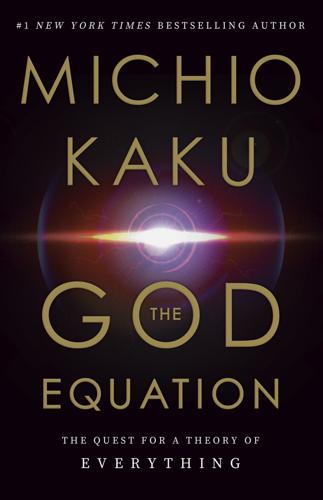
The God Equation: The Quest for a Theory of Everything
by
Michio Kaku
Published 5 Apr 2021
In 1682, a sensational event happened that changed the course of history. A blazing comet sailed over London. Everyone, from kings and queens to beggars, was buzzing with the news. Where did it come from? Where was it going? What did it portend? One man who took an interest in this comet was astronomer Edmond Halley. He took a trip to Cambridge to meet the famous Isaac Newton, already well-known for his theory of light. (By shining sunlight through a glass prism, Newton showed that white light separated into all the colors of the rainbow, thereby demonstrating that white light is actually a composite color.
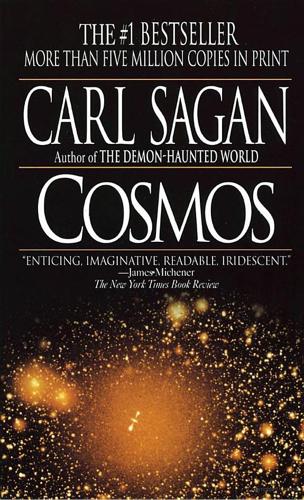
Cosmos
by
Carl Sagan
Published 1 Jan 1980
Kepler, on the other hand, lectured on astronomy in schools, published extensively and often at his own expense, and wrote science fiction, which was certainly not intended primarily for his scientific peers. He may not have been a popular writer of science in the modern sense, but the transition in attitudes in the single generation that separated Tycho and Kepler is telling. *Sadly, Newton does not acknowledge his debt to Kepler in his masterpiece the Principia. But in a 1686 letter to Edmund Halley, he says of his law of gravitation: “I can affirm that I gathered it from Kepler’s theorem about twenty years ago.” CHAPTER IV HEAVEN AND HELL The doors of heaven and hell are adjacent and identical. —Nikos Kazantzakis, The Last Temptation of Christ The Earth is a lovely and more or less placid place.
…
Comets shine, as the planets do, by reflected sunlight, “and they are much mistaken who remove them almost as far as the fixed stars; for if it were so, the comets could receive no more light from our Sun than our planets do from the fixed stars.” He showed that comets, like planets, move in ellipses: “Comets are a sort of planets revolved in very eccentric orbits about the Sun.” This demystification, this prediction of regular cometary orbits, led his friend Edmund Halley in 1707 to calculate that the comets of 1531, 1607 and 1682 were apparitions at 76-year intervals of the same comet, and predicted its return in 1758. The comet duly arrived and was named for him posthumously. Comet Halley has played an interesting role in human history, and may be the target of the first space vehicle probe of a comet, during its return in 1986.
…
The cometary orbit is 2пa = 2п × 105 × 1.5 × 108 km ≈ 1014 km around, and its speed is therefore only 1014 km/1015 sec = 0.1 km/sec ≈ 220 miles per hour. *On Mars, where erosion is much more efficient, although there are many craters there are virtually no ray craters, as we would expect. *As far as I know, the first essentially nonmystical attempt to explain a historical event by cometary intervention was Edmund Halley’s proposal that the Noachic flood was “the casual Choc [shock] of a Comet.” †The Adda cylinder seal, dating from the middle of the third millennium B.C., prominently displays Inanna, the goddess of Venus, the morning star, and precursor of the Babylonian Ishtar. *It is, incidentally, some 30 million times more massive than the most massive comet known.
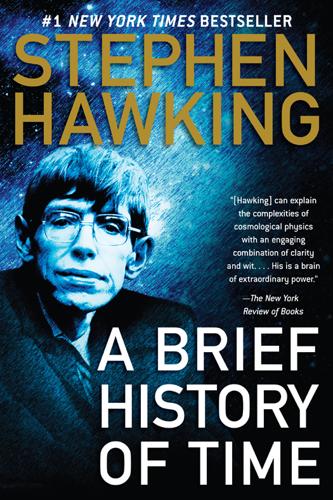
A Brief History of Time
by
Stephen Hawking
Published 16 Aug 2011
Newton soon clashed with the Astronomer Royal, John Flamsteed, who had earlier provided Newton with much-needed data for Principia, but was now withholding information that Newton wanted. Newton would not take no for an answer: he had himself appointed to the governing body of the Royal Observatory and then tried to force immediate publication of the data. Eventually he arranged for Flamsteed’s work to be seized and prepared for publication by Flamsteed’s mortal enemy, Edmond Halley. But Flamsteed took the case to court and, in the nick of time, won a court order preventing distribution of the stolen work. Newton was incensed and sought his revenge by systematically deleting all references to Flamsteed in later editions of Principia. A more serious dispute arose with the German philosopher Gottfried Leibniz.
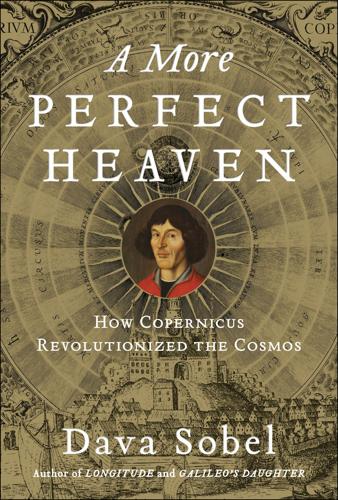
More Perfect Heaven: How Copernicus Revolutionised the Cosmos
by
Dava Sobel
Published 1 Sep 2011
In his student days, he undoubtedly consulted one of the three Trinity College first editions still held by that venerable library. After Newton established universal gravitation as the force that kept the planets in their orbits around the Sun, copies of Copernicus’s book came into the possession of many other giants in astronomy, such as comet namesake Edmond Halley, his successor as astronomer royal George Biddell Airy, computing pioneer Charles Babbage, and twentieth-century cosmologist Edwin Hubble, who was first to appreciate the infinite extent and continuing expansion of the universe. Now that Copernicus’s text no longer serves to describe the known paths of the planets, it is more highly valued than ever as an icon.
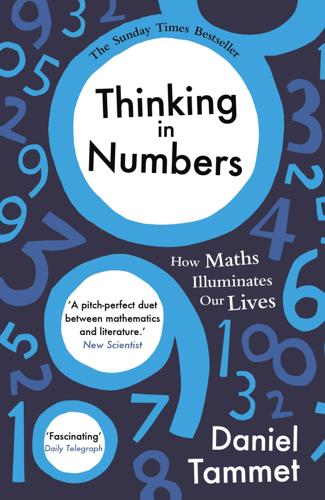
Thinking in Numbers
by
Daniel Tammet
Published 15 Aug 2012
Stories took the place of science, their tellers repeating the same message over and over: life is full of surprises. Remember Old John, one tale would go, Old John who laughed so hard at his neighbour’s joke that his heart gave out? The farmer’s wife who was butted into her grave by the goat? The squire who caught cold sleeping in church? It was in this atmosphere of ambivalence that Edmond Halley, who found lasting fame calculating a comet’s orbit, published An Estimate of the Degrees of the Mortality of Mankind in 1693. Halley based his figures on the city of Breslaw, capital of the province of Silesia, ‘near the confines of Germany and Poland and very near the latitude of London’ with a total population of 34,000.
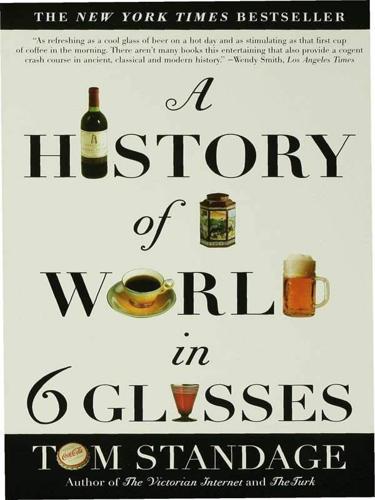
A History of the World in 6 Glasses
by
Tom Standage
Published 1 Jan 2005
Chiefly remembered today as the architect of St. Paul's Cathedral in London, Wren was also one of the leading scientists of his day. He was a founding member of the Royal Society, Britain's pioneering scientific institution, which was formed in London in 1660. Its members, including Hooke, Pepys, and Edmond Halley (the astronomer after whom the comet is named), would often decamp to a coffeehouse after the society's meetings to continue their discussions. To give a typical example, on May 7, 1674, Hooke recorded in his diary that he demonstrated an improved form of astronomical quadrant at the Royal Society, and repeated his demonstration afterward at Garraway's coffeehouse, where he discussed it with John Flamsteed, an astronomer appointed by Charles II as the first astronomer royal the following year.
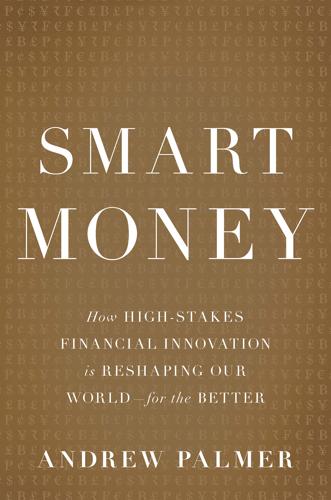
Smart Money: How High-Stakes Financial Innovation Is Reshaping Our WorldÑFor the Better
by
Andrew Palmer
Published 13 Apr 2015
The process of “discounting” is central to financial analysis today—from businesses working out whether to invest in a new plant to pension schemes assessing whether they have enough money to pay their members’ retirement benefits—and is connected to Fibonacci by an eight-hundred-year thread.12 If Fibonacci’s contribution to finance is little known compared to his more famous observation, the same goes for Edmond Halley. Another of the great polymaths that previous ages routinely turned out, Halley was an English astronomer royal who gave his name to the comet that is visible from earth every seventy-five to seventy-six years (its next visit is due in 2061). The comet won him immortality, but his major financial breakthrough was concerned with death.
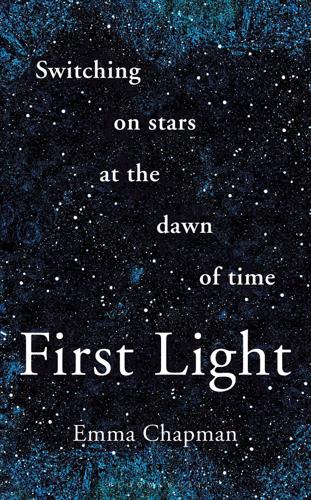
First Light: Switching on Stars at the Dawn of Time
by
Emma Chapman
Published 23 Feb 2021
Building an understanding of eclipses is a waiting game. Over the years astronomers added ever more complexity into the mathematical models tracing the motion of the Moon, Earth and Sun and other planets in the Solar System. Even the tiny tug of distant Jupiter could influence the timing of a solar eclipse. English astronomer Edmond Halley carried out one of the first documented efforts to predict a total solar eclipse in 1715.8 Halley is now more famous for using Newton’s laws of gravity to calculate the periodicity of the comet that bears his name. However, in 1715 he used the same laws to predict an eclipse to within just four minutes.
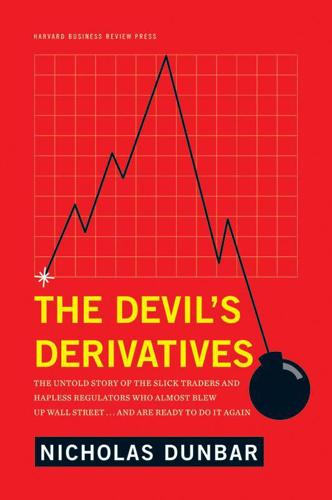
The Devil's Derivatives: The Untold Story of the Slick Traders and Hapless Regulators Who Almost Blew Up Wall Street . . . And Are Ready to Do It Again
by
Nicholas Dunbar
Published 11 Jul 2011
In the late 1990s, the way most bond investors and lending banks looked at credit was reminiscent of how insurance companies work. This safety-in-numbers actuarial approach went back three hundred years, to a financial breakthrough that transformed the way people dealt with misfortune: the birth of modern life insurance. The early life insurance companies were based on the work of Edmund Halley, who published the first usable mortality tables, based on parish records for the Polish-German city of Breslau, in 1693, showing that about one in thirty inhabitants of the city died each year. Armed with these figures, a company could use the one-thirtieth fraction to set prices for life insurance policies and annuities.
…
In using this new mathematics to ask how likely such events were, Bernoulli and de Moivre laid the foundations for statistical testing and, ultimately, value at risk (VAR). Driven as ever by financial insecurity, de Moivre seized on the commercial applications of this theory for the next thirty years. Later editions of the Doctrine included pages of annuity and life insurance calculations, prompted by the need to update Edmund Halley’s famous mortality tables. He continued revising the book until, by the final edition, he was too blind to proofread it.7 He might have been too blind to read, but he could see that his book was having a negative impact on society. By demystifying chance, he realized that he was helping to undermine the moral strictures that kept some people away from the gaming tables.
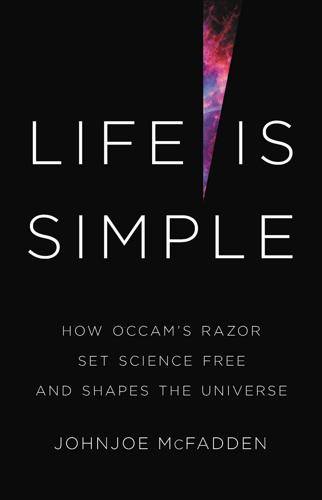
Life Is Simple: How Occam's Razor Set Science Free and Shapes the Universe
by
Johnjoe McFadden
Published 27 Sep 2021
ii Even more simply, it can be expressed as the equation P1V1 = P2V2 indicating that the product of pressure (P) and volume (V) of a gas at times 1 and 2 is constant: if one goes up, the other must go down. 11 The Notion of Motion Three scientists walk into a (coffee) bar Following a meeting held at Gresham College on the north bank of the Thames on the evening of Monday, 24 January 1684, Robert Hooke, together with two of his Royal Society fellow members, Edmund Halley and Christopher Wren, made their way to a local coffee house. This was thirty years after Hooke and Boyle had shown their revolutionary vacuum demonstrations to members of the Invisible College in Oxford. Since then, Hooke had become experimental curator to the Royal Society and had performed many ground-breaking experiments, including demonstrating capillary pressure and, after building his own microscopes, discovering the incredible diversity of microbial life.
…
Robert Hooke insisted that he already had the answer; yet when his friends probed him for details, he grew evasive, insisting that they must first attempt to solve the problem themselves so that they could come to appreciate the difficulty of the task and the ingenuity of its eventual solution. To settle the matter, Wren offered a prize of a book worth the princely sum of forty shillings to whichever of the pair could provide a convincing proof. Time passed and nobody came forward to claim the prize. In March 1684, Edmund Halley received news that his father had vanished from his home in Islington. Five weeks later, his father’s body was discovered washed up on the shore of a river east of London: he had clearly been murdered. As he had died intestate, Halley was forced to endure many months of legal wrangling that, in August 1684, took him to Alconbury, close to Cambridge.
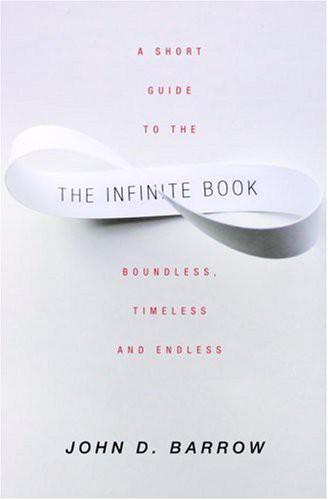
The Infinite Book: A Short Guide to the Boundless, Timeless and Endless
by
John D. Barrow
Published 1 Aug 2005
You can discover whether the Universe is infinite, but the learning will take an infinite time. THE SHINING ‘Day and night Night and day’ Night and Day, Cole Porter Fig 7.17 Looking into the woods. Everywhere your line of sight ends on a tree trunk. We should see a forest of stars if we look out into the universe. Edmond Halley (1656–1742) is known throughout the world because of the comet that bears his name. Halley calculated its orbit and determined that comets seen in 1531, 1607 and 1682 were the same object that followed a 76-year orbit (on average).26 Unfortunately, Halley died in 1742, and never lived to see his prediction come true when the comet returned on Christmas Eve in 1758.
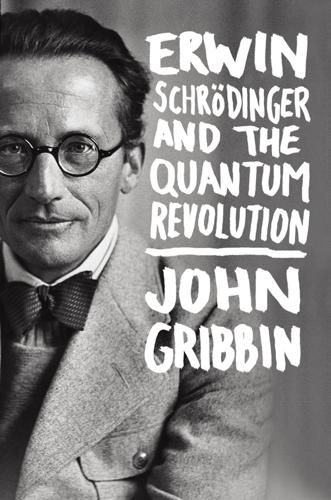
Erwin Schrodinger and the Quantum Revolution
by
John Gribbin
Published 1 Mar 2012
This led to Newton presenting his ideas about light and colours to the Society, and in turn to a virulent argument with Robert Hooke (1635–1703), the man who as Curator of Experiments and later Secretary did more than anyone to make the Society a success. The experience confirmed Newton’s view that publicizing his ideas only led to trouble, and he retreated into his shell in Cambridge. There he continued thinking deeply about the nature of the physical world, but stopped telling anyone about his thoughts. That changed in 1684, when Edmond Halley (1656–1742) visited Newton in Cambridge. The purpose of his visit was to ask if Newton could help with a problem that had been puzzling Halley, Hooke, and another Fellow of the Royal Society, Christopher Wren (1632–1723). The three scientists had realized that the orbits of the planets around the Sun could be explained by a force which falls off in proportion to the square of the distance of a planet from the Sun (an inverse-square law), but they could not prove that all of the laws of planetary motion, described by Johannes Kepler (1571–1630), must result from such a law.
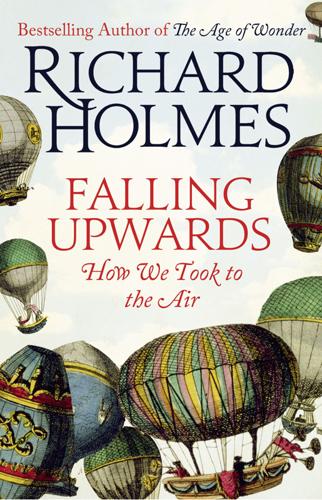
Falling Upwards: How We Took to the Air
by
Richard Holmes
Published 24 Apr 2013
His word ‘meteorology’ was derived from Aristotle’s Greek term, meteor, simply meaning anything ‘high up’. So Descartes’ meteorology was partly astronomy, including meteors, comets and shooting stars, as well as speculations on the nature of clouds, fog, sunshine, the formation of ice and the cause of storms. In 1686 the British astronomer and mathematician Edmund Halley drew on maritime records to construct an early chart of global weather systems, suggesting tropical and subtropical airflows over the major oceans and land masses.28 In the 1730s George Hadley, like Halley a Fellow of the Royal Society, developed the theory of trade winds, which took account of global rotation and thermal convection.
…
Hunt, p.328 18 Glaisher, Travels in the Air, p.31 19 Ibid., pp.31, 33 20 Ibid., pp.38–40 21 Rolt, p.250 22 J.L. Hunt, p.327 23 Ibid. 24 Glaisher, Travels in the Air, p.43 25 Ibid., pp.44–7 26 Stan Yorke, Weather Forecasting Made Simple, 2010, p.46 27 See ibid., chapter ‘Old Tales’, pp.56–7 28 Edmund Halley’s weather chart is held by the National Meteorological Archive, Great Moor House, Exeter 29 Dove’s ‘Law of Storms’, 1858, described in John D. Cox, The Storm Watchers: The Turbulent History of Weather Prediction, 2003, p78 30 John Ruskin, quoted in Fort, p.234 31 Fort, pp.218–19 32 Ibid., p.225 33 Ibid. 34 Glaisher, Travels in the Air, pp.50–5; Astra Castra, pp.385–9 35 The Times, 10 September 1862, p.10 36 J.L.
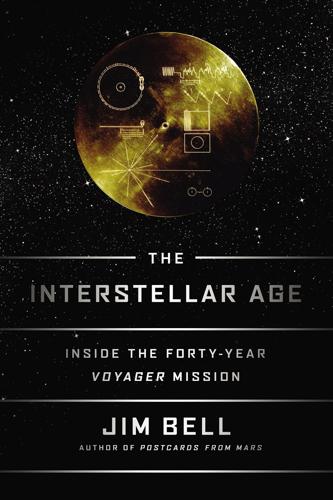
The Interstellar Age: Inside the Forty-Year Voyager Mission
by
Jim Bell
Published 24 Feb 2015
When my colleagues on the navigation team at JPL, for example, want to study a possible trajectory for a new space mission, they load their computers with the positions and masses of the sun, all the planets and their fifty or so large moons, and more than a half million asteroids, to make sure that every single possible “perturber” of the spacecraft is taken into consideration in their calculations. When astronomers and mathematicians like Edmond Halley and Pierre-Simon Laplace were working out the theory of motions of comets and asteroids, they were working on what physicists call the three-body problem, for example needing to account for the gravity and motions of the sun, Jupiter, and one of the Galilean satellites; or maybe the sun, Jupiter, and a newly discovered comet.
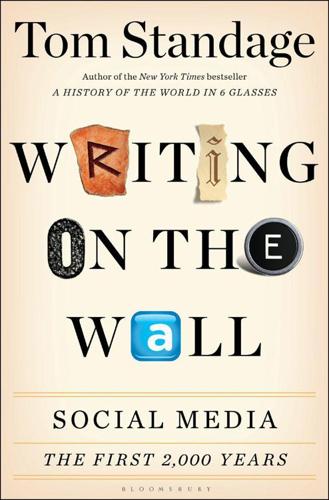
Writing on the Wall: Social Media - the First 2,000 Years
by
Tom Standage
Published 14 Oct 2013
COFFEE HOUSES AND COLLABORATIVE INNOVATION Hooke and several of his scientific colleagues, including Christopher Wren and Robert Boyle, had acquired a taste for coffee in Oxford during the 1650s, when they had all been members of a club of science enthusiasts formed by John Wilkins, a senior academic at the university. They continued their tradition of coffeehouse discussion in London, where theirs was one of several groups that came together in 1660 to form the Royal Society, Britain’s pioneering scientific institution. The society’s members, who also included Pepys, Isaac Newton, and Edmond Halley, would often decamp to a coffeehouse after its meetings to continue their discussions. On May 7, 1674, for example, Hooke recorded in his diary that he demonstrated an improved form of astronomical quadrant at a meeting of the Royal Society, and then repeated his demonstration afterward at Garraway’s coffeehouse, where he discussed it with John Flamsteed, an astronomer who was appointed by Charles II as the first Astronomer Royal the following year.
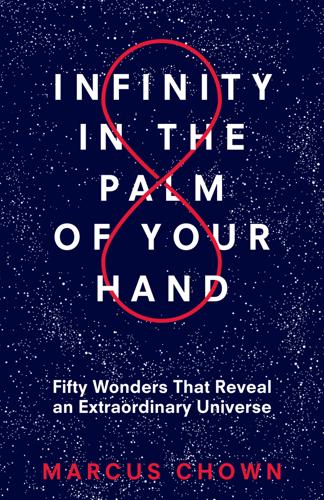
Infinity in the Palm of Your Hand: Fifty Wonders That Reveal an Extraordinary Universe
by
Marcus Chown
Published 22 Apr 2019
There, in enforced exile, he not only penetrated the mystery of gravity but also discovered that sunlight is made of all the colors of the rainbow and invented the mathematics of calculus. Bizarrely, though, Newton did not tell anyone about his law of gravity for almost twenty years. What finally prompted him to go public was an approach made to him by Edmund Halley, today best known for the comet that bears his name. Halley wanted to settle a dispute between his London friends Christopher Wren and Robert Hooke about the path a body would take if it was influenced by a force obeying an inverse-square law. He traveled to Cambridge in August 1684 and, in Newton’s rooms, asked the great man.

Starbucked: A Double Tall Tale of Caffeine, Commerce, and Culture
by
Taylor Clark
Published 5 Nov 2007
For their frenetic intellectual activity and egalitarian atmosphere, these establishments were called “Penny Universities,” because for the price of a cup of coffee, patrons could hear the latest news, participate in debate, or witness, say, Adam Smith writing his “Wealth of Nations.” If a Londoner was in the mood for science, he could wander over to a place like the Grecian Coffee House, where Isaac Newton, the astronomer Edmond Halley, and the physician Hans Sloane once dissected a dolphin that had wandered into the Thames river. Edification came free with every purchase. Historians disagree about why the Brits switched so abruptly to tea, terminating the London coffee-house phenomenon, but one possible cause is this: the coffee tasted repulsive. * Since the government taxed coffee by the gallon, proprietors had to make it in advance — first roasting the beans in frying pans over a fire, which left them half scorched and half raw — and then reheat the brew later.

Sextant: A Young Man's Daring Sea Voyage and the Men Who ...
by
David Barrie
Published 12 May 2014
But the complicated behavior of the moon—powerfully influenced as it is by the gravity both of the sun and of the earth—made it much harder to predict its celestial coordinates with accuracy than those of the other heavenly bodies. Although Newton had dazzled the world with the laws of motion that allowed the paths of the sun and its planets to be predicted with hitherto unimaginable precision, the moon had defeated him. But though his lunar tables were not good enough for the purposes of determining longitude, Edmond Halley (1656–1742) recognized that the errors in them recurred regularly every eighteen years and eleven days—in accordance with a well-known cycle of eclipses. This discovery enabled him to develop a rule for correcting the tables, which was later improved by the French astronomer Pierre-Charles Le Monnier (1715–99).
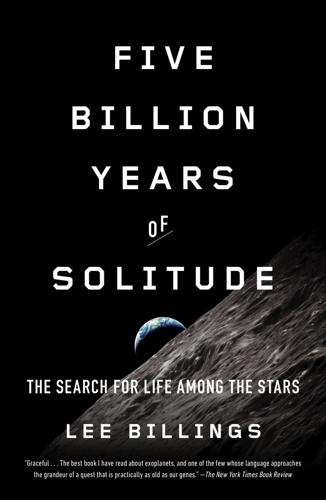
Five Billion Years of Solitude: The Search for Life Among the Stars
by
Lee Billings
Published 2 Oct 2013
Horrocks’s correction of Kepler’s calculations set the timing for transits in future years. A pair would occur in 1761 and 1769, then in 1874 and 1882, then in the far-off years of 2004 and 2012, continuing on and on in what was thought to be an endless cycle. Writing in the Proceedings of the Royal Society in 1716, the English astronomer Edmond Halley suggested how Venusian transits could provide an absolute Earthly reference point against which the rest of the universe could be measured. When viewed from different places on Earth, Halley wrote, the path of Venus across the Sun would shift slightly, also shifting the transit’s duration. By precisely timing the transit to distinguish the shift between two widely separated locations, it would be possible to triangulate the distance between the Earth and the Sun.

The Knowledge Machine: How Irrationality Created Modern Science
by
Michael Strevens
Published 12 Oct 2020
The Scottish philosopher David Hume described him as “the greatest and rarest genius that ever wrote for the ornament and instruction of the species”; Voltaire held him to be “the greatest genius that ever existed.” The Marquis de l’Hôpital, a French mathematician, supposedly went further still: Newton was “a celestial intelligence entirely disengaged from matter.” Such intimations of near-divinity had begun with a poem that Edmond Halley wrote for the first edition of the Principia, ending with the line, “No closer to the gods can any mortal rise.” The English artist George Bickham put the words into pictorial form in a 1732 engraving showing Newton as the sun surrounded by angels, muses, and putti. Around the same time, the Venetian painter Giovanni Battista Pittoni conceived his Homage to Newton, in which an angel and the goddess of wisdom Minerva lead a procession of muses to Newton’s shrine—a rococo confection featuring a colossal urn containing Newton’s ashes and a reconstruction and commemoration of the optical experiment in which he used a prism to split light into its component colors (Figure 6.4).
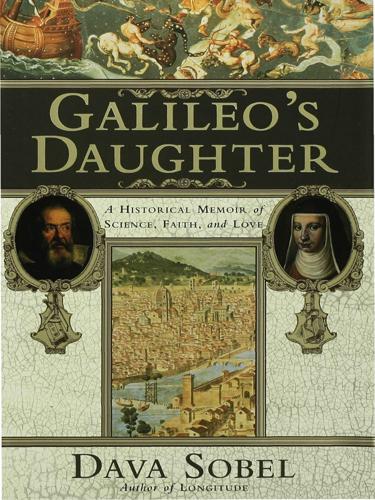
Galileo's Daughter: A Historical Memoir of Science, Faith and Love
by
Dava Sobel
Published 25 May 2009
Isaac Newton is born in England, December 25. 1643 Galileo’s student Evangelista Torricelli (1608-47) invents mercury barometer. 1644 Pope Urban VIII dies. 1648 Thirty Years’ War ends. 1649 Vincenzio Galilei (son) dies in Florence, May 15. 1654 Grand Duke Ferdinando II improves on Galileo’s thermometer by closing the glass tube to keep air out. 1655-56 Christiaan Huygens (1629-95) improves telescope, discovers largest of Saturn’s moons, sees Saturn’s “companions” as a ring, patents pendulum clock. 1659 Suor Arcangela dies at San Matteo, June 14. 1665 Jean-Dominique Cassini (1625-1712) discovers and times the rotation of Jupiter and Mars. 1669 Sestilia Bocchineri Galilei dies. 1670 Grand Duke Ferdinando II dies, succeeded by his only surviving son, Cosimo III. 1676 Ole Roemer (1644-1710) uses eclipses of Jupiter’s moons to determine the speed of light; Cassini discovers gap in Saturn’s rings. 1687 Newton’s laws of motion and universal gravitation are published in his Principia. 1705 Edmond Halley (1656-1742) studies comets, realizes they orbit the Sun, predicts return of a comet later named in his honor. 1714 Daniel Fahrenheit (1686-1736) develops mercury thermometer with accurate scale for scientific purposes. 1718 Halley observes that even the fixed stars move with almost imperceptible “proper motion” over long periods of time. 1728 English astronomer James Bradley (1693-1762) provides first evidence for the Earth’s motion through space based on the aberration of starlight. 1755 Immanuel Kant (1724-1804) discerns the true shape of the Milky Way, identifies the Andromeda nebula as a separate galaxy. 1758 “Halley’s comet” returns. 1761 Mikhail Vasilyevich Lomonosov (1711-65) realizes Venus has an atmosphere. 1771 Comet hunter Charles Messier (1730-1817) identifies a list of noncometary objects, many of which later prove to be distant galaxies. 1781 William Herschel (1738-1822) discovers the planet Uranus. 1810 Napoleon Bonaparte, having conquered the Papal States, transfers the Roman archives, including those of the Holy Office with all records of Galileo’s trial, to Paris. 1822 Holy Office permits publication of books that teach Earth’s motion. 1835 Galileo’s Dialogue is dropped from Index of Prohibited Books. 1838 Stellar parallax, and with it the distance to the stars, is detected independently by astronomers working in South Africa, Russia, and Germany; Friedrich Wilhelm Bessel (1784-1846) publishes the first account of this phenomenon, for the star 61 Cygni. 1843 Galileo’s trial documents are returned to Italy. 1846 Neptune and its largest moon are discovered by predictions and observations of astronomers working in several countries. 1851 Jean-Bernard-Leon Foucault (1819-68) in Paris demonstrates the rotation of the Earth by means of a two-hundred-foot pendulum. 1861 Kingdom of Italy proclaimed, uniting most states and duchies. 1862 French chemist Louis Pasteur (1822-95) publishes germ theory of disease. 1877 Asaph Hall (1829-1907) discovers the moons of Mars. 1890-1910 Complete works, Le Opere di Galileo Galilei, are edited and published in Florence by Antonio Favaro. 1892 University of Pisa awards Galileo an honorary degree—250 years after his death. 1893 Providentissimus Deus of Pope Leo XIII cites Saint Augustine, taking the same position Galileo did in his Letter to Grand Duchess Cristina, to show that the Bible did not aim to teach science. 1894 Pasteur’s student Alexandre Yersin (1863-1943) discovers bubonic plague bacillus and prepares serum to combat it. 1905 Albert Einstein (1879-1955) publishes his special theory of relativity, establishing the speed of light as an absolute limit. 1908 George Ellery Hale (1868-1938) discerns the magnetic nature of sunspots. 1917 Willem de Sitter (1872-1934) intuits the expansion of the universe from Einstein’s equations. 1929 American astronomer Edwin Hubble (1889-1953) finds evidence for expanding universe. 1930 Roberto Cardinal Bellarmino is canonized as Saint Robert Bellarmine by Pope Pius XI. 1935 Pope Pius XI inaugurates Vatican Observatory and Astrophysical Laboratory at Castel Gandolfo. 1950 Humani generis of Pope Pius XII discusses the treatment of unproven scientific theories that may relate to Scripture; reaches same conclusion as Galileo’s Letter to Grand Duchess Cristina. 1959 Unmanned Russian Luna 3 spacecraft radios first views of the Moon’s far side from lunar orbit. 1966 Index of Prohibited Books is abolished following the Second Vatican Council. 1969 American astronauts Neil Armstrong and Buzz Aldrin walk on the Moon. 1971 Apollo 15 commander David R.
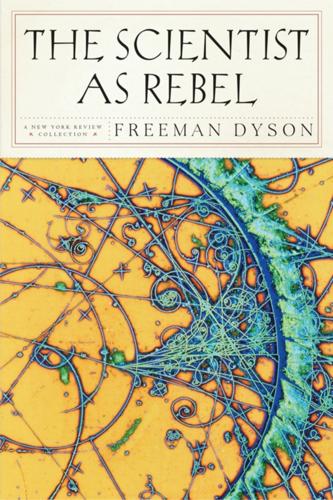
The Scientist as Rebel
by
Freeman Dyson
Published 1 Jan 2006
The third volume analyzes the diverse phenomena of the real world, the motions of sun and moon, planets, satellites, and comets, the precession of the earth’s axis of rotation, and the rise and fall of tides, and shows how they all occur precisely as his principles predict. The manuscript of the Principia, which Newton’s friend Edmond Halley took with him to London in 1686 to be published, is in Humphrey Newton’s hand. Humphrey’s description of Newton’s life in Cambridge was written many years later. Newton spent much of his time in the elaboratory, a wooden building in his garden in which he did alchemical experiments. Here is Humphrey writing about Newton as an alchemist: Especially at spring and fall of the leaf, at which times he used to imploy about six weeks in his Elaboratory, the fire scarcely going out either night or day, he sitting up one night, as I did another, till he had finished his chymical experiments, in the performances of which he was the most accurate, strict, exact.

Adapt: Why Success Always Starts With Failure
by
Tim Harford
Published 1 Jun 2011
One foggy night Admiral Sir Clowdisley Shovell, wrongly believing that his fleet was further west of the English mainland, wrecked four ships on the Isles of Scilly. Sir Clowdisley’s miscalculation led to more deaths than the sinking of the Titanic. The British parliament turned to Sir Isaac Newton and the comet expert Edmond Halley for advice, and in 1714 passed the Act of Longitude, promising a prize of £20,000 for a solution to the problem. Compared with the typical wage of the day, this was over £30 million pounds in today’s terms. The prize transformed the way that the problem of longitude was attacked. No longer were the astronomers of the Royal Observatory the sole official searchers – the answer could come from anyone.
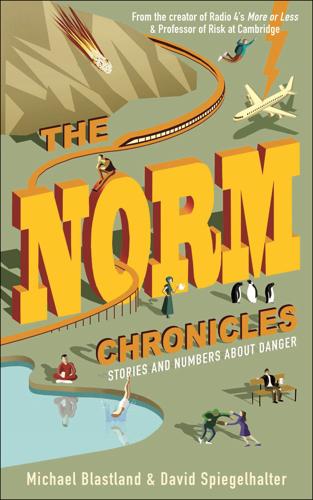
The Norm Chronicles
by
Michael Blastland
Published 14 Oct 2013
The number 70 was important for another reason: since the ancient Greeks there had been a superstition about the risks of ages that were multiples of 7. In particular, the ‘climacteric years’ of 49 and 63 were thought positively dangerous. Partly in order to combat this belief, in 1689 a priest in Breslau in Silesia (now Wroclaw in Poland) collected the ages at which people died. The data eventually found their way to Edmond Halley in England, who took time off from discovering comets to construct the first serious life-table in 1693, which uses estimates of the annual risk of dying to work out the chances of living to any age. Figure 34: Halley’s original calculations for what we would expect for 1,000 people starting their first year1 By year 15 there would be only 628 left alive, of whom 6 would die before 16, a force-of-mortality of 6/628 = 1 per cent.
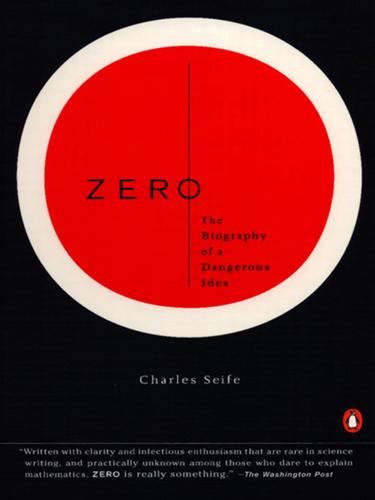
Zero: The Biography of a Dangerous Idea
by
Charles Seife
Published 31 Aug 2000
And as physicists and mathematicians all over the world were beginning to use calculus to explain nature, cries of protest emanated from the church. In 1734, seven years after Newton’s death, an Irish bishop, George Berkeley, wrote a book entitled The Analyst, Or a Discourse Addressed to an Infidel Mathematician. (The mathematician in question was most likely Edmund Halley, always a supporter of Newton.) In The Analyst, Berkeley pounced on Newton’s (and Leibniz’s) dirty tricks with zeros. Calling infinitesimals “ghosts of departed quantities,” Berkeley showed how making these infinitesimals disappear with impunity can lead to a contradiction. He concluded that “he who can digest a second or third fluxion, a second or third difference, need not, methinks, be squeamish about any point in divinity.”
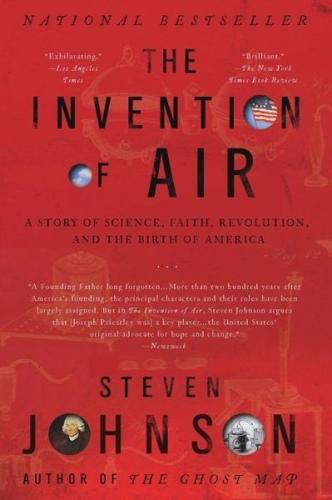
The Invention of Air: A Story of Science, Faith, Revolution, and the Birth of America
by
Steven Johnson
Published 26 Dec 2008
Newton’s Philosophiæ Naturalis Principia Mathematica had almost instantly revolutionized science when it appeared a century before. As the historian of science Thomas Kuhn writes, “No other work known to the history of science has simultaneously permitted so large an increase in both the scope and precision of research.” The Principia even sold relatively well—Newton and his publisher, Edmund Halley, actually turned a small profit from it, despite its daunting content. But Newton had played by a set of genre conventions that limited the scope of his readership. Like other experimental philosophers of the age, Newton generally adopted a synthetic approach, one that, in the words of the historian Simon Shaffer, “presented discovery as a set of logically inevitable moves, and the achievement of discovery as an heroic act.”
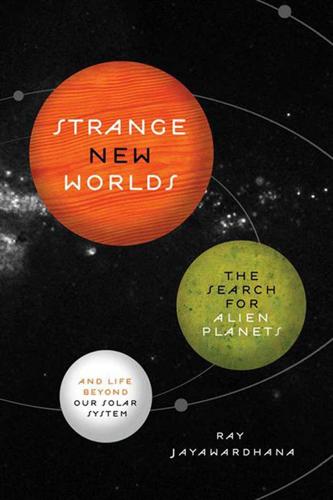
Strange New Worlds: The Search for Alien Planets and Life Beyond Our Solar System
by
Ray Jayawardhana
Published 3 Feb 2011
Eight years later, Englishmen Jeremiah Horrocks and William Crabtree, friends living thirty miles apart, made the frst recorded observations of a Venus transit by projecting the Sun’s image with small telescopes. Perhaps inspired by a transit of Mercury he observed from the island of St. Helena in 1677, Edmund Halley, of comet fame, presented a paper to the Royal Society in London in 1691 on measuring the distance between the Earth and the Sun—the astronomical unit—using transit timings. His suggestion, an idea also proposed by a Scottish mathematician almost thirty years earlier, was to time the transit from widely separated locations on Earth and use the difference in the apparent paths taken by Venus across the face of the Sun to calculate the Earth-Venus and thus Earth-Sun distance using trigonometry.
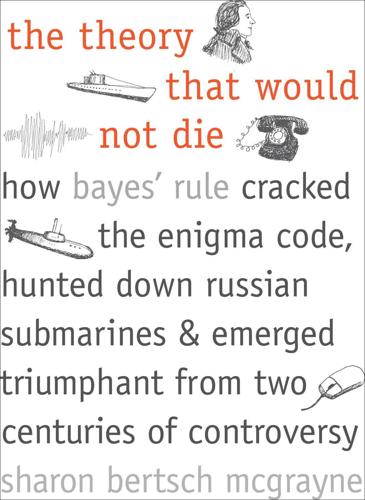
The Theory That Would Not Die: How Bayes' Rule Cracked the Enigma Code, Hunted Down Russian Submarines, and Emerged Triumphant From Two Centuries of Controversy
by
Sharon Bertsch McGrayne
Published 16 May 2011
Contemporaries called it the Century of Lights and the Age of Science and Reason, and the popularization of science was its most important intellectual phenomenon. Given the almost dizzying curiosity of the times, it is not surprising that, shortly after his tenth birthday, Pierre Simon was profoundly affected by a spectacular scientific prediction.2 Decades before, the English astronomer Edmond Halley had predicted the reappearance of the long-tailed comet that now bears his name. A trio of French astronomers, Alexis Claude Clairaut, Joseph Lalande, and Nicole-Reine Lepaute, the wife of a celebrated clockmaker, solved a difficult three-body problem and discovered that the gravitational pull of Jupiter and Saturn would delay the arrival of Halley’s comet.
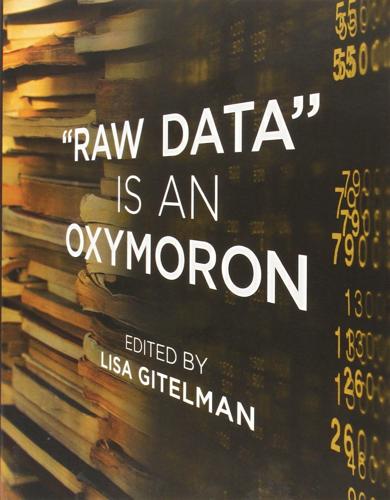
Raw Data Is an Oxymoron
by
Lisa Gitelman
Published 25 Jan 2013
When astronomers try to place the moon at a date in the past when there was known to be an eclipse, their equations often say there was no such eclipse, or place the eclipse at a different location from where it was observed. The easiest solution to this problem is to add a small term to the equations of the moon’s motion that will place the eclipse in the right time and place. The change in motion is called the “secular acceleration.” The existence of this acceleration was first suspected by Edmund Halley in 1692, and was confirmed by astronomers in the eighteenth century.3 An accurate value for this acceleration is quite important, because without it, it becomes very difficult to predict the moon’s motion more than a century or two away from the present. Unfortunately calculating this value is rather challenging, as one needs an accurate location for the moon in the distant past.
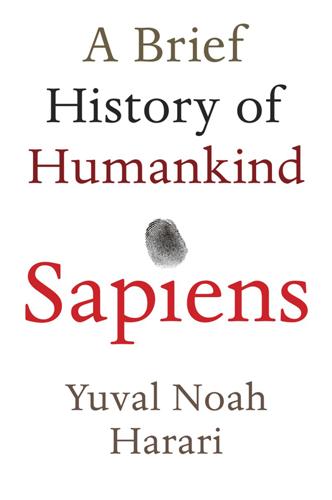
Sapiens: A Brief History of Humankind
by
Yuval Noah Harari
Published 1 Jan 2011
That is, while Maclaurin could not use maths to predict whether Webster and Wallace would die next year, he could, given enough data, tell Webster and Wallace how many Presbyterian ministers in Scotland would almost certainly die next year. Fortunately, they had ready-made data that they could use. Actuary tables published fifty years previously by Edmond Halley proved particularly useful. Halley had analysed records of 1,238 births and 1,174 deaths that he obtained from the city of Breslau, Germany. Halley’s tables made it possible to see that, for example, a twenty-year-old person has a 1:100 chance of dying in a given year, but a fifty-year-old person has a 1:39 chance.
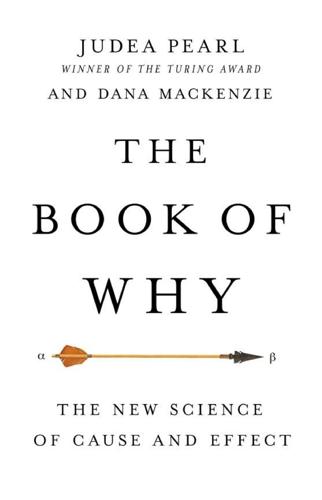
The Book of Why: The New Science of Cause and Effect
by
Judea Pearl
and
Dana Mackenzie
Published 1 Mar 2018
Only after gamblers invented intricate games of chance, sometimes carefully designed to trick us into making bad choices, did mathematicians like Blaise Pascal (1654), Pierre de Fermat (1654), and Christiaan Huygens (1657) find it necessary to develop what we today call probability theory. Likewise, only when insurance organizations demanded accurate estimates of life annuity did mathematicians like Edmond Halley (1693) and Abraham de Moivre (1725) begin looking at mortality tables to calculate life expectancies. Similarly, astronomers’ demands for accurate predictions of celestial motion led Jacob Bernoulli, Pierre-Simon Laplace, and Carl Friedrich Gauss to develop a theory of errors to help us extract signals from noise.
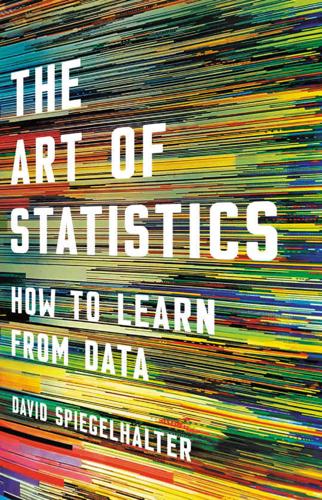
The Art of Statistics: How to Learn From Data
by
David Spiegelhalter
Published 2 Sep 2019
But again we should emphasize that these are technological systems that use past data to answer immediate practical questions, rather than scientific systems that seek to understand how the world works: they are to be judged solely on how well they carry out the limited task at hand, and, although the form of the learned algorithms may provide some insights, they are not expected to have imagination or have super-human skills in everyday life. This would require ‘general’ AI, which is both beyond the content of this book and, at least at present, beyond the capacity of machines. Ever since formulae for calculating insurance and annuities were developed by Edmund Halley in the 1690s, statistical science has been concerned with producing algorithms to help in human decisions. The modern development of data science continues that tradition, but what has changed in recent years is the scale of the data being collected and the imaginative products being developed: so-called ‘big data’.
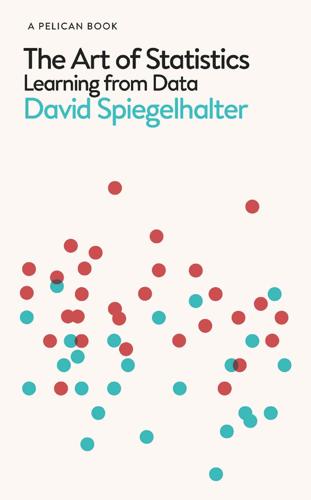
The Art of Statistics: Learning From Data
by
David Spiegelhalter
Published 14 Oct 2019
But again we should emphasize that these are technological systems that use past data to answer immediate practical questions, rather than scientific systems that seek to understand how the world works: they are to be judged solely on how well they carry out the limited task at hand, and, although the form of the learned algorithms may provide some insights, they are not expected to have imagination or have super-human skills in everyday life. This would require ‘general’ AI, which is both beyond the content of this book and, at least at present, beyond the capacity of machines. Ever since formulae for calculating insurance and annuities were developed by Edmund Halley in the 1690s, statistical science has been concerned with producing algorithms to help in human decisions. The modern development of data science continues that tradition, but what has changed in recent years is the scale of the data being collected and the imaginative products being developed: so-called ‘big data’.
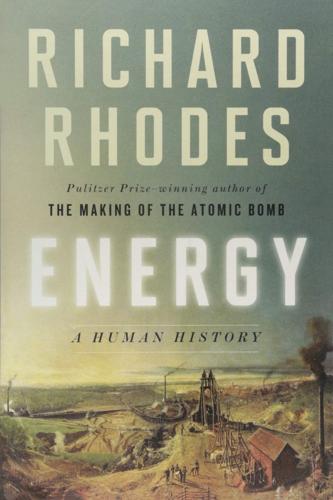
Energy: A Human History
by
Richard Rhodes
Published 28 May 2018
Demonstrators were not accorded scientific authority in eighteenth-century England, however, no matter how exceptional their gifts—they were closer in standing to servants, who were expected to represent their masters’ opinions, right or wrong.25 The appointment went instead to the astronomer Edmond Halley, and in 1687 Papin crossed Europe again to a mathematics professorship among fellow Huguenots at the University of Marburg, in Hessen. Papin’s 1679 digester, with weighted safety valve L-M-N. At Marburg, Papin continued his experiments. In the late 1680s, observing that water occupies more than a thousand times its previous volume when it turns to steam, he decided that steam rather than gunpowder was the better working medium for his engine.

Radical Uncertainty: Decision-Making for an Unknowable Future
by
Mervyn King
and
John Kay
Published 5 Mar 2020
Graunt worked with the assistance of his patron and friend Sir William Petty, whose Statistical Account of England foreshadowed the national accounts compiled today by statisticians and extensively used by economists. 5 Anxious to develop Graunt’s work, the Society identified the extensive records of births and deaths in the Polish city of Breslau (now Wrocław) as a unique and promising source of data. The analysis was entrusted to Edmond Halley, better known for the comet to which his name is attached that reappears at intervals of seventy-five to seventy-six years. 6 Halley constructed the first mortality table, from which it was possible to estimate life expectancies. The Equitable Life Assurance Society was founded in 1761, and took the name because it was the first life insurer to base its premiums on scientific principles designed to achieve fairness between different policy-holders, using a mortality table compiled from records of deaths in Northampton, England. 7 Such tables represent one of the earliest attempts to take the application of probability beyond the gaming table and apply it to processes that are not the random product of chance events.
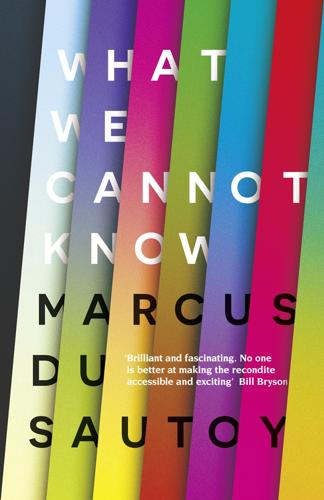
What We Cannot Know: Explorations at the Edge of Knowledge
by
Marcus Du Sautoy
Published 18 May 2016
The transit of Venus from two different locations on Earth. The trouble is that these transits don’t happen that often. Venus has crossed in front of the Sun only 10 times since 1400. Gregory had originally proposed using the transit of Mercury, since the next transit of Venus wouldn’t be till 1761. Edmond Halley knew of the work and made observations of the transit of Mercury that occurred in 1676, but it transpired that only one other observation was made, enough theoretically to calculate the distance, but, given the errors that can creep in, you really want as many observations as possible. It was the multiple observations of the transits of Venus in 1761 and 1769 that finally enabled calculations to be made of the distance of the Earth from the Sun.
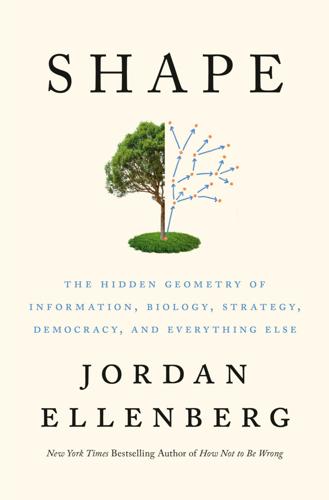
Shape: The Hidden Geometry of Information, Biology, Strategy, Democracy, and Everything Else
by
Jordan Ellenberg
Published 14 May 2021
Elliott surely didn’t know about Louis Bachelier’s work on stock prices as a random walk, but if he had, he wouldn’t have given it a minute. He didn’t want to believe stock prices were randomly jittering like dust suspended in fluid. He wanted something more like the comforting physical laws that kept the planets safely in their orbits. Elliott compared himself to Edmond Halley, who figured out in the seventeenth century that the apparently random comings and goings of comets actually obeyed a rigid timetable. “Man is no less a natural object than the sun and moon,” Elliott wrote, “and his actions too, in their metrical occurrence, are subject to analysis.” Elliott pored through seventy-five years’ worth of the stock ticker, down to its minute-by-minute movements, trying to make the ups and downs resolve into a story that made sense.
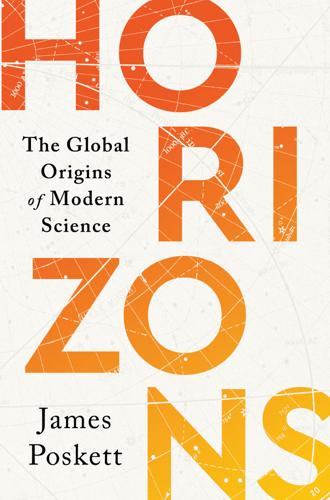
Horizons: The Global Origins of Modern Science
by
James Poskett
Published 22 Mar 2022
At one point in the Principia, Newton did describe the force of gravity exerted by the Sun on Jupiter and Saturn. But again, he was only able to do this in terms of the ratio between the two, rather than absolute values.33 The transit of Venus would solve this problem. In 1716, Newton’s friend Edmond Halley suggested a method for measuring the exact distance between the Earth and the Sun. Halley realized that Venus would take less time to move across the face of the Sun for observers in the southern hemisphere as opposed to those in the northern hemisphere. This is an effect known as ‘parallax’, where the same object appears in a different position from different points of observation.
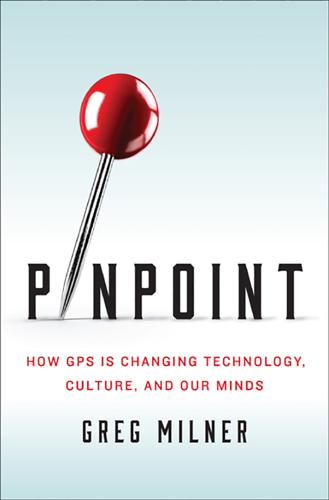
Pinpoint: How GPS Is Changing Our World
by
Greg Milner
Published 4 May 2016
CHAPTER TWO The When and the Where When James Cook visited Tahiti in 1769, the summer he met Tupaia, the captain was moonlighting as a stargazer. Every dozen decades or so, the planet Venus crosses the face of the sun—usually twice within a period of a few years—a phenomenon called the transit of Venus. In the late seventeenth century, the astronomer Edmund Halley had argued that close observation of the transit could help refine calculations regarding the distance between Earth, moon, sun, and other planets. These calculations would be more accurate, he noted, if observations were taken from around the world. Several worldwide expeditions had been dispatched for the 1761 transit, but the next, in 1769, involved a much larger global effort.

Skyfaring: A Journey With a Pilot
by
Mark Vanhoenacker
Published 1 Jun 2015
Nor can they be interfered with externally—indeed, the development of inertial navigation was spurred by the need for accurate, jamming-proof guidance systems for missiles. Flying over north London I can see a churchyard in which I sometimes sit with a coffee, where the tomb of John Harrison, “late of Red-Lion Square,” stands. Encouraged by the astronomer Edmund Halley, Harrison developed the “sea clocks” that helped solve the longitude problem, the difficulty with determining one’s east–west position at sea, an achievement so important that the officials who recognized it were known as Commissioners of Longitude. At such moments over London, as we come to the end of the planetwide countdown that every flight to this city effects, our longitude is nearly zero; it may ticktock from west and east and back to west as we cross the Greenwich Meridian in the next minutes of our approach pattern to Heathrow.
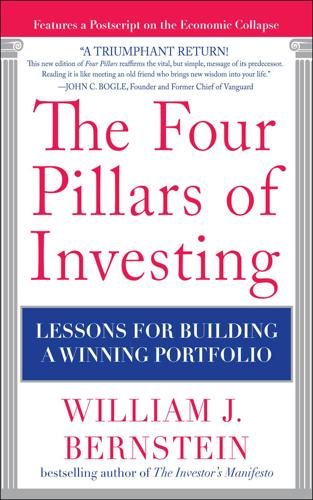
The Four Pillars of Investing: Lessons for Building a Winning Portfolio
by
William J. Bernstein
Published 26 Apr 2002
The frenzy spilled over the entire continent, where new ventures were floated with the vast amounts of capital now available. There was even a fashionable new technology involved: the laws of probability. Fermat and Pascal had recently invented this branch of mathematics, and, in 1693, Astronomer Royal Edmund Halley developed the first mortality tables. Soon the formation of insurance companies became all the rage; these would figure prominently as the speculative action moved to London. The ancien régime was not the only government deep in hock. By 1719, England had incurred immense debts during the War of the Spanish Succession.

The Ascent of Money: A Financial History of the World
by
Niall Ferguson
Published 13 Nov 2007
Made upon the Bills of Mortality’, which sought to estimate the likelihood of dying from a particular cause on the basis of official London mortality statistics. However, Graunt’s data did not include ages at death, limiting what could legitimately be inferred from them. It was his fellow member of the Royal Society, Edmund Halley, who made the critical breakthrough using data supplied to the Society from the Prussian town of Breslau (today Wrocław in Poland). Halley’s life table, based on 1,238 recorded births and 1,174 recorded deaths, gives the odds of not dying in a given year: ‘It being 100 to 1 that a Man of 20 dies not in a year, and but 38 to 1 for a Man of 50 . . .’
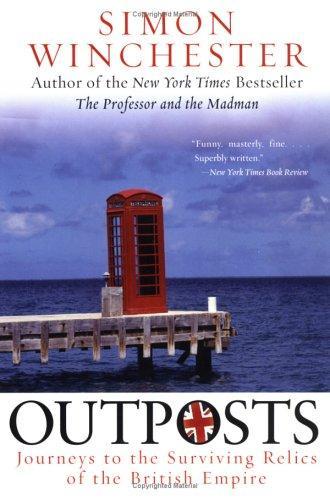
Outposts: Journeys to the Surviving Relics of the British Empire
by
Simon Winchester
Published 31 Dec 1985
The array of inhabitants and visitors produced bewildering complications: there was no island currency, and at one time a treasurer complained that among the coinage in common use in Jamestown were gold dubloons, mohurs from Bengal, moidores, star pagodas, gold gubbers and Venetian sequins, as well as rupees and ducatoons, German crowns, Marie Thérèse dollars, joes from Portugal, guilders from Holland, rixdollars, francs and English shillings. A steady cavalcade of the distinguished dropped by: Edmund Halley, the astronomer who gave his name to the comet, came to the mountains of St Helena to observe the transit of Mercury; fog obscured his view, and it often swirls over the flax-covered hill that bears his name, and where he mounted his telescope. Captain Bligh looked in, and presented some breadfruit which he was taking from Tahiti to Jamaica.
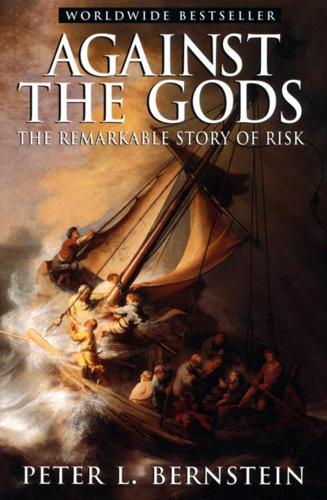
Against the Gods: The Remarkable Story of Risk
by
Peter L. Bernstein
Published 23 Aug 1996
Sampling, averages, and notions of what is normal make up the struc ture that would in time house the science of statistical analysis, putting information into the service of decision-making and influencing the degrees of belief we hold about the probabilities of future events. Some thirty years after the publication of Graunt's Natural and Political Observations, another work appeared that was similar to Graunt's but even more important to the history of risk management. The author of this work, Edmund Halley, was a scientist of high repute who was familiar with Graunt's work and was able to carry his analysis further. Without Graunt's first effort, however, the idea of such a study might never have occurred to Halley. Although Halley was English, the data he used came from the Silesian town of Breslau-Breslaw, as it was spelled in those dayslocated in the easternmost part of Germany; since the Second World War the town has been part of Poland and is now known as Wrozlaw.
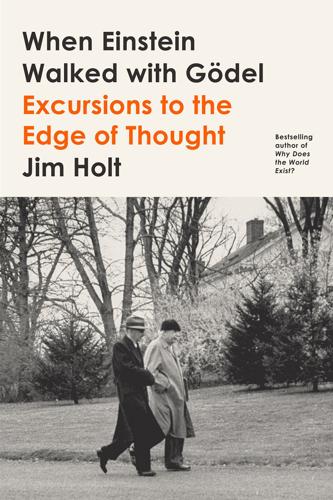
When Einstein Walked With Gödel: Excursions to the Edge of Thought
by
Jim Holt
Published 14 May 2018
In 1734, the philosopher published a devastating attack on the infinitesimal calculus titled The Analyst; or, A Discourse Addressed to an Infidel Mathematician. What motivated Berkeley was the threat to orthodox Christianity posed by the growing prestige of mechanistic science. (The “infidel mathematician” addressed is generally supposed to have been Newton’s friend Edmund Halley.) As contrary to reason as the tenets of Christian theology might sometimes appear, Berkeley submitted, they were nowhere near so arcane and illogical as the linchpin of the new science, the infinitesimal. Defenders of the calculus were made to confront the following dilemma: either infinitesimals are exactly zero, in which case calculations involving division by them make no sense, or they are not zero, in which case the answers must be wrong.
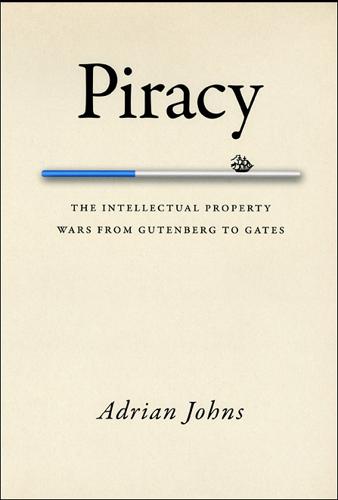
Piracy : The Intellectual Property Wars from Gutenberg to Gates
by
Adrian Johns
Published 5 Jan 2010
The problem of the longitude is only the best known of them: anyone who furnished a reliable and portable technique for determining the longitude of a ship far removed from its home port would become rich, and would vastly enhance the power of the nation that possessed the secret. Aspirants to “solve the longitude” included not only men like Edmond Halley but any number of otherwise obscure “projectors.” By the early eighteenth century they had become a running joke. But as well as the longitude, the sea presented other issues demanding explanation, including the phenomena of the tides. Alongside these issues, moreover, which were predominantly mathematical and physical, it also posed a set of chemical questions.
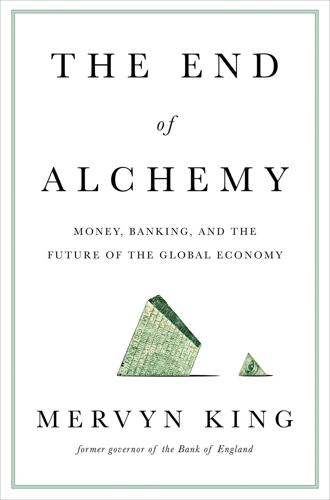
The End of Alchemy: Money, Banking and the Future of the Global Economy
by
Mervyn King
Published 3 Mar 2016
Newspapers and television are only too willing to print the latest forecast of, say, national income with a degree of precision that beggars belief and far exceeds the ability of statisticians to measure it. And at the end of each year prizes are awarded to the forecasters who turned out to be the most accurate. It makes as much sense as it would to award the Fields Medal in mathematics to the winner of the National Lottery. No economic forecaster has ever been able to match Edmund Halley, who in 1682 made calculations predicting that the comet then visible in the skies would return seventy-six years later. It did – on Christmas Day 1758. Fortunately the length of the economic cycle – the duration of the expansion and subsequent contraction of the economy before it returns to its normal levels of output and employment – is shorter than the periodicity of Halley’s Comet – although if it goes on increasing at its present rate even that might not be true.
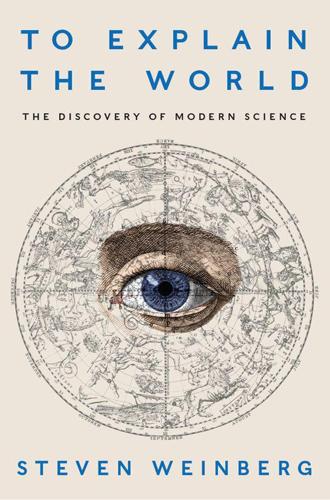
To Explain the World: The Discovery of Modern Science
by
Steven Weinberg
Published 17 Feb 2015
The third supposition is, That these attractive powers are so much the more powerful in operating, by how much the nearer the body wrought upon is to their own Centers.6 Hooke wrote to Newton about his speculations, including the inverse square law. Newton brushed him off, replying that he had not heard of Hooke’s work, and that the “method of indivisibles”7 (that is, calculus) was needed to understand planetary motions. Then in August 1684 Newton received a fateful visit in Cambridge from the astronomer Edmund Halley. Like Newton and Hooke and also Wren, Halley had seen the connection between the inverse square law of gravitation and Kepler’s third law for circular orbits. Halley asked Newton what would be the actual shape of the orbit of a body moving under the influence of a force that decreases with the inverse square of the distance.
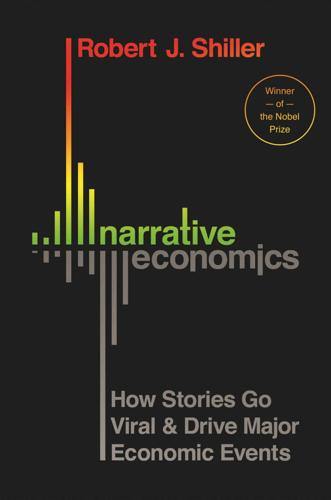
Narrative Economics: How Stories Go Viral and Drive Major Economic Events
by
Robert J. Shiller
Published 14 Oct 2019
With economic forecasts of a recession, people might observe other people decrease their spending after the warning and take that as evidence of a storm of lost confidence. The idea that economic fluctuations tend to repeat themselves follows an older scientific tradition that has had a prominent place in modern culture. For example, astronomer Edmund Halley noted in the year 1682 that comets sometimes appeared at intervals of 75.3 years. He hypothesized that the same comet was returning again and again, and he predicted it would be visible from Earth again in 1758. Halley was proven right, and to this day Halley’s comet returns every 75.3 years, though the comet has faded so much that in its latest arrival in 1985–86 it was almost invisible.

Frommer's London 2009
by
Darwin Porter
and
Danforth Prince
Published 25 Aug 2008
It has the largest refracting telescope in the United Kingdom and a collection of historic timekeepers and astronomical instruments. You can stand astride the meridian and set your watch precisely by the falling time-ball. Sir Christopher Wren designed the Octagon Room. Here the first royal astronomer, Flamsteed, made the 30,000 observations that formed the basis of his Historia Coelestis Britannica. Edmond Halley, he of the eponymous Halley’s Comet, succeeded him. In 1833, the ball on the tower was hung to enable shipmasters to set their chronometers accurately. Designed by Inigo Jones, Queen’s House (1616) is a fine example of this architect’s innovative style. It’s most famous for the cantilevered tulip staircase, the first of its kind.
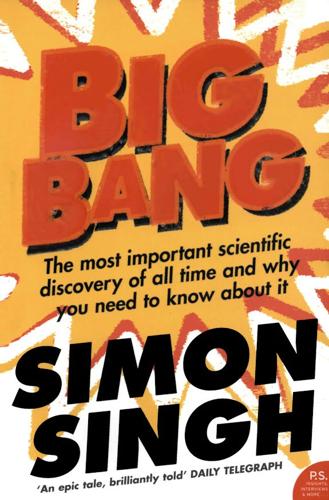
Big Bang
by
Simon Singh
Published 1 Jan 2004
Although the stars all moved across the sky every night, astronomers realised that this apparent motion was caused by the Earth’s rotation. In particular, they assumed that the stars’ positions relative to one another remained the same. In fact, this was false, as pointed out in 1718 by the English astronomer Edmund Halley. Even after taking into account the motion of the Earth, he became aware of subtle discrepancies in the recorded positions of the stars Sirius, Arcturus and Procyon compared with measurements made by Ptolemy many centuries earlier. Halley realised that these differences were not down to inaccurate measurements, but were the result of genuine shifts in the positions of these stars over time.
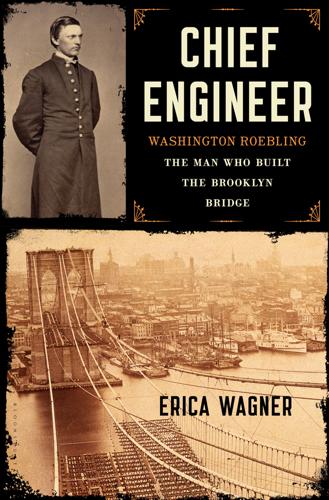
Chief Engineer
by
Erica Wagner
Evangelista Torricelli, a seventeenth-century Italian scientist who first developed the barometer, remarked in a letter that “we live submerged at the bottom of an ocean of air.” In 1648 the French scientist and philosopher Blaise Pascal demonstrated the effect of altitude on a column of mercury: the height of the column was three inches lower at the top of the Puy-de-Dȏme mountain in the Auvergne than it was at sea level in Paris. Before the century was out Edmund Halley had begun his experiments in the other direction, creating one of the first diving bells; in 1691 Halley and a few companions spent an hour and a half sixty feet below the surface of the sea off the south coast of England. The first real caisson was constructed in a coal mine in the Loire Valley by Charles-Jean Triger; and here, in 1840, the first medical observation of “the bends”—so called because of the twisting agony it caused in its victims—were made.
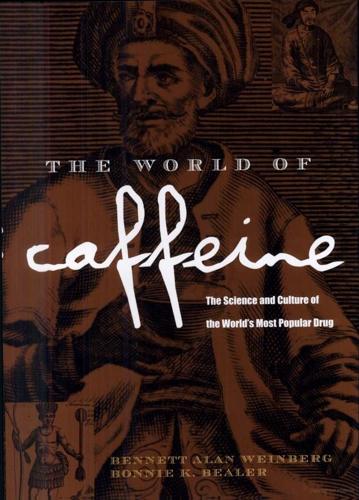
The World of Caffeine: The Science and Culture of the World's Most Popular Drug
by
Bennett Alan Weinberg
and
Bonnie K. Bealer
Published 5 Dec 2000
He evidently believed, in this case at least, that the whole was less than the sum of its illustrious parts, because he derisively records in his history that a club was built, “at Tillyards, where many pretended wits would meet and deride all others.” The first participants included Hans Sloane, founder of the British Museum, Sir Edmund Halley, the great astronomer, and Sir Isaac Newton, originator of the calculus, celestial mechanics, and the postulates of classical physics. The members’ avid curiosity prompted hands-on scientific investigation: Sloane, Halley, and Newton are said to have dissected a dolphin on a table in the coffeehouse before an amazed audience.

Europe: A History
by
Norman Davies
Published 1 Jan 1996
The name combines and improves on three genuine Welsh village names: LLANFAIR PWLLGWYNGYLL and LLANDYSILIO (Anglesey) and LLANDYSILIOGOGO (Cardiganshire). Letter from Professor Rees Davies of Aberystwyth, 16 May 1994. LLOYD’S 1. A. Brown, Hazard Unlimited: From Ships to Satellites: 300 years of Lloyd’s of London (Colchester, 1987). 2. Edmund Halley, in Mortality in Pre-industrial Times: The Contemporary Verdict: Edmund Halley et al., j H. Cassedy, ed. (Farnborough, 1973); also R. Schofield et al, eds., The Decline of Mortality in Europe (Oxford, 1991). LOOT 1. ‘I once had two wonderful statues, a woman and a young man, both so perfect that one could see their veins. They were taken when Poros was destroyed, and some soldiers were going to sell them to the Europeans in Argos….
…
Insurance had far-reaching implications in the realm of social psychology. If chronic insecurity had encouraged traditional beliefs in religion and [MAGIC], the advance of material security was bound to have its effect on popular responses to the great imponderables of luck and death. In 1693 the Royal Society commissioned Edmund Halley to prepare a statistical report on ‘The Degrees of Mortality of Mankind’. It was worried by a recent financial disaster resulting from annuities sold without reference to age. Halley found that the only suitable data came from Breslau (now Wrocław) in Austrian Silesia, where the registration of deaths included the age of the deceased.
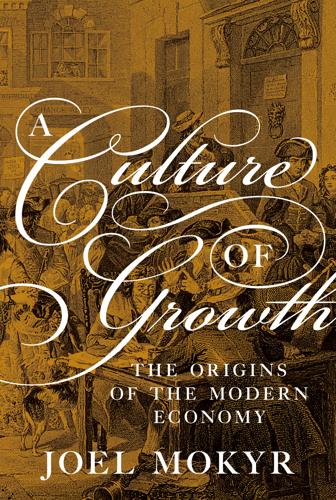
A Culture of Growth: The Origins of the Modern Economy
by
Joel Mokyr
Published 8 Jan 2016
In Italy, the impact of Newton can be measured by the appearance in 1737 of Il Newtonianismo per le Dame (Newtonism for Ladies) by Francesco Algarotti (Mazzotti, 2004).22 Over time, Newton’s standing only rose as the embodiment of the Enlightenment’s view of the ideal scientist.23 The impact of Newton on the thin but strategically placed class of European intellectuals in the eighteenth century was immense and was famously summarized by Alexander Pope’s epitaph.24 Similarly, the astronomer Edmund Halley in his “Ode to Newton” (1687) wrote “Come celebrate with me in song the name of Newton, to the Muses dear; for he Unlocked the hidden treasuries of Truth. … Nearer the Gods, no mortal may approach” (Halley [1687], 1934]). The only other intellectual of the age whose impact on his age and stature in modern assessment resembles Newton’s (despite differing from him in almost every other dimension), John Locke, recognized Newton’s achievement—but only after verifying with Huygens that the mathematics were sound.25 The respectability of scientific research that augments useful knowledge was embodied in the Royal Society that Newton presided over.
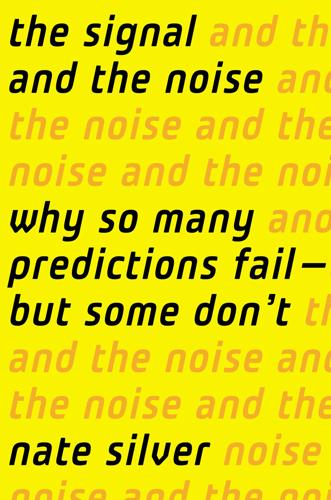
The Signal and the Noise: Why So Many Predictions Fail-But Some Don't
by
Nate Silver
Published 31 Aug 2012
FIGURE C-1: SHORTSTOP DIVING RANGES Whatever range of abilities we have acquired, there will always be tasks sitting right at the edge of them. If we judge ourselves by what is hardest for us, we may take for granted those things that we do easily and routinely. One of the most spectacularly correct predictions in history was that of the English astronomer Edmund Halley, who in 1705 predicted that a great comet would return to the earth in 1758. Halley had many doubters, but the comet returned just in the nick of time.2 Comets, which in antiquity were regarded as being wholly unpredictable omens from the gods,3 are now seen as uncannily regular and predictable things.
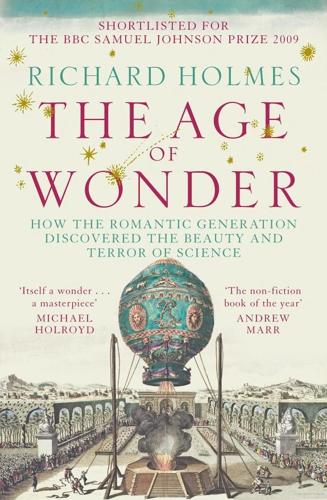
The Age of Wonder
by
Richard Holmes
Published 15 Jan 2008
I calculated nebulae all day, paid the smith…The night was tolerably fine and I SAW THE COMET.22 Both Aristotle and Galileo had thought comets were low-level atmospheric phenomena, perhaps lower than the moon. The study of comets was improved by the sixteenth-century Danish astronomer Tycho Brahe, but transformed in 1682 when Edmund Halley famously calculated that the Great Comet of that year, subsequently named after him, would reappear in 1759. It was then finally accepted that comets were outer-space objects that moved in extreme elliptical orbits round the sun, and swung far beyond the known planets. Yet they were still mysterious: of unknown origin and composition, various in their appearance, irregular and alarming in their habits.
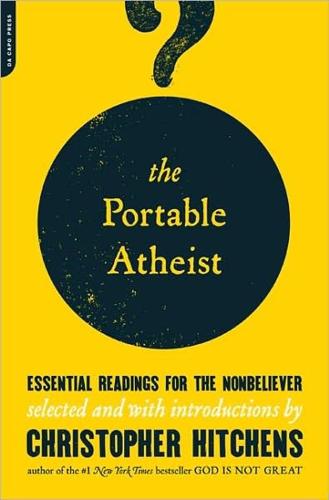
The Portable Atheist: Essential Readings for the Nonbeliever
by
Christopher Hitchens
Published 14 Jun 2007
The Buddha is said to have attained enlightenment at almost exactly the same time. Confucius would be born a few decades later. Comets are a similar example of spectacular astronomical phenomena that ancient people commonly regarded as supernatural omens but science has since described in natural terms, that is, with purely material models. In the seventeenth century, Edmund Halley (d. 1742) used the mechanical theories developed by his friend Isaac Newton (d. 1727) to predict that a comet seen in 1682 would return in 1759. Indeed it did, after Halley’s death, and has done so every seventy-six years since. Most comets appear unexpectedly, having such extended orbits that they have spent human history outside our view.

Frommer's England 2011: With Wales
by
Darwin Porter
and
Danforth Prince
Published 2 Jan 2010
You can stand astride the 204 09_615386-ch06.indd 20409_615386-ch06.indd 204 8/24/10 2:07 PM8/24/10 2:07 PM 6 EXPLORING LONDON Especially for Kids meridian and set your watch precisely by the falling time-ball. Sir Christopher Wren designed the Octagon Room. It was here that the first royal astronomer, Flamsteed, made the 30,000 observations that formed the basis of his Historia Coelestis Britannica. Edmond Halley, of the eponymous Halley’s Comet, succeeded him. In 1833, the ball on the tower was hung to enable shipmasters to set their chronometers accurately. (1616) is a fine example of Designed by Inigo Jones, the Queen’s House this architect’s innovative style. It’s most famous for the cantilevered tulip staircase, the first of its kind.
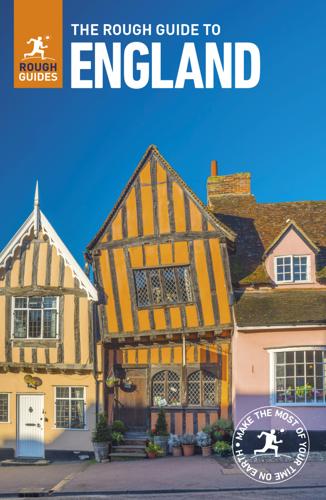
The Rough Guide to England
by
Rough Guides
Published 29 Mar 2018
Squeeze down narrow St Helen’s Passage – decorously renamed from its original title, Hell’s Passage – on the left to reach the famed Turf Tavern and the seventeenth-century cottages on Bath Place, insinuated into kinks of the medieval city walls. Just past St Helen’s Passage, the modest house on the left, topped by a mini-observatory, was the home of astronomer Edmund Halley (1656–1742), discoverer of the comet that bears his name. Bodleian Library Broad St, OX1 3BG • Closed to the public; some rooms accessible on tours • 01865 287400, www.bodleian.ox.ac.uk Christopher Wren’s pupil Nicholas Hawksmoor designed the Clarendon Building, a domineering, solidly symmetrical edifice at the east end of Broad Street, completed in 1713.
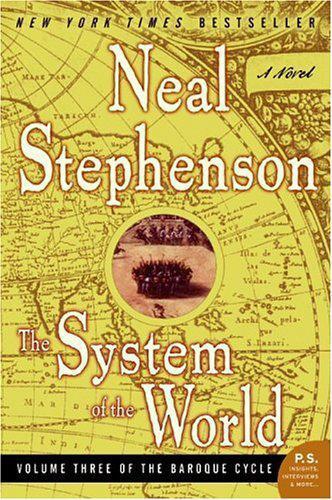
The system of the world
by
Neal Stephenson
Published 21 Sep 2004
asked Orney. “He was an educated Frenchman. He professed to be a sort of Enthusiast, an amateur of Natural Philosophy. He simply wanted to know what the Royal Society was like. He asked all sorts of questions about what happened during the meetings, and what the Fellows were like—Sir Christopher Wren, Edmund Halley, and especially Sir Isaac Newton.” “Did you ever mention to this amateur that Sir Isaac made a practice of coming to Crane Court on Sunday evenings, and working late?” asked Daniel. “I don’t remember for certain, sir, but it is quite possible—that is the sort of thing this fellow loved to hear about, sir.”
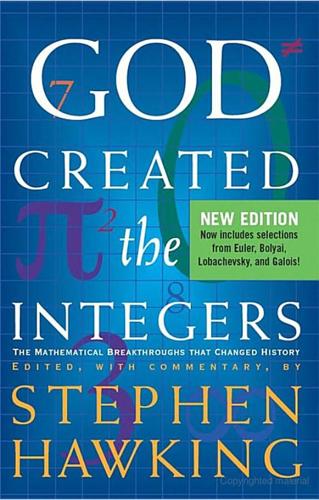
God Created the Integers: The Mathematical Breakthroughs That Changed History
by
Stephen Hawking
Published 28 Mar 2007
This time, he turned his attention to Kepler’s second law, the law of equal areas, which Newton was able to prove held true because of centripetal force. Hooke, too, was attempting to explain the planetary orbits, and some of his letters on that account were of particular interest to Newton. At an infamous gathering in 1684, three members of the Royal Society—Robert Hooke, Edmond Halley, and Christopher Wren, the noted architect of St. Paul’s Cathedral—engaged in a heated discussion about the inverse-square relation governing the motions of the planets. In the early 1670s, the talk in the coffee-houses of London and other intellectual centers was that gravity emanated from the sun in all directions and fell off at a rate inverse to the square of the distance, thus becoming more and more diluted over the surface of the sphere as that surface expands.
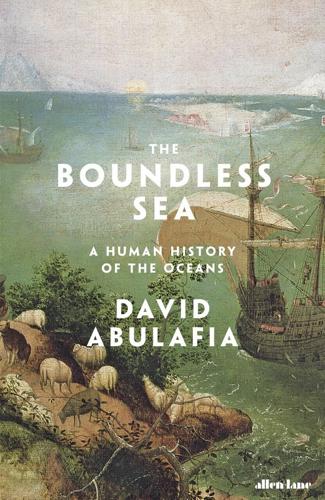
The Boundless Sea: A Human History of the Oceans
by
David Abulafia
Published 2 Oct 2019
But, he objected, some of these ships were West Indian and simply did not have the capacity to carry large amounts of wine.12 In July 1700 he was already thinking ahead and keeping his partners in London well informed: ‘We are like to have a plentiful Vintage: the weather is good and above half the vines are out of danger, soe that it wil be your advantage to send a ship to be here the latter end of December, or the beginning of January.’ He insisted that ‘our Vintage wil be large. The weather cannot be better. Now our hopes is only upon a good season to gather it.’13 One visitor Bolton observed was the great astronomer Edmund Halley: a ship arrived in January 1699, and ‘on borde her was Mr Halley , the Mathematician, bound to the coast of Brazil and to the southward of ye Cape ; his designe is to observe the variation of ye Compass’.14 Bolton’s letters thus expose to view a whole network of contacts mediated through Madeira, which became the meeting point for ships travelling to and from Portugal, the Netherlands, England, North America, the West Indies and Brazil.